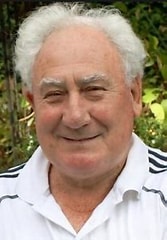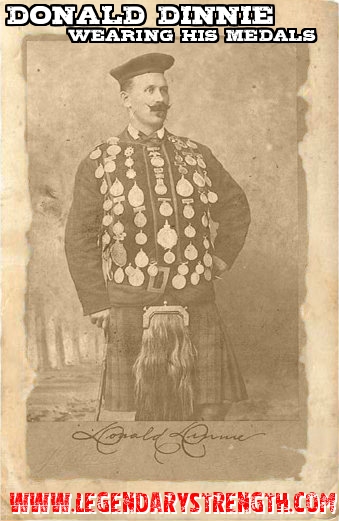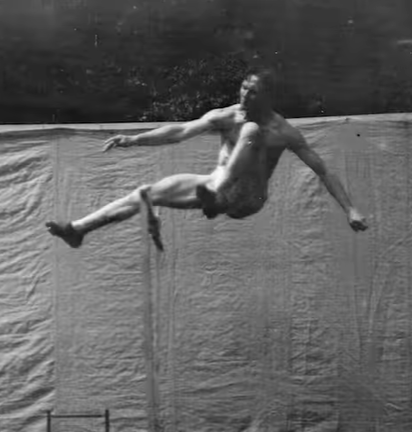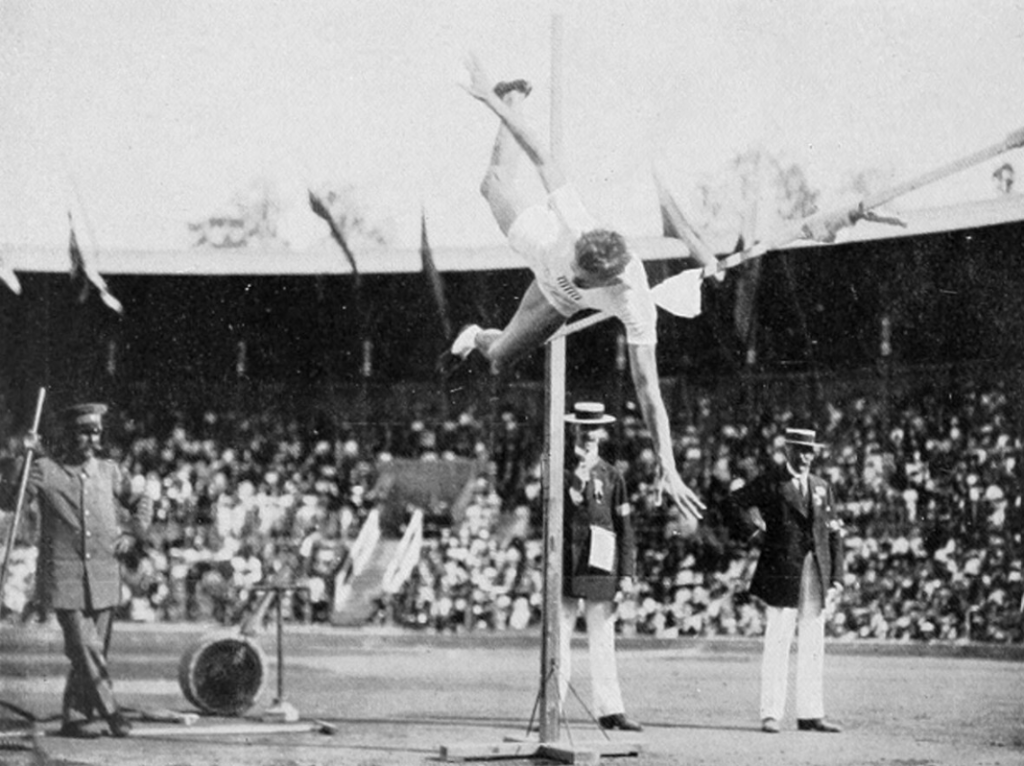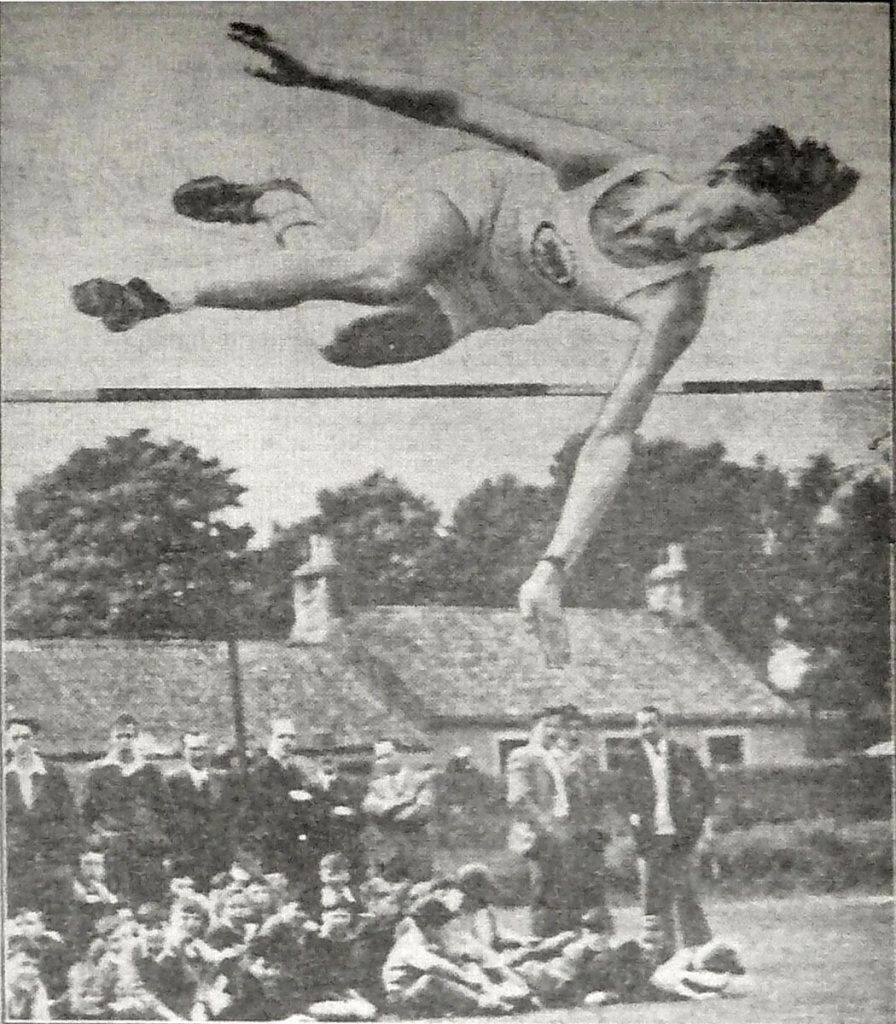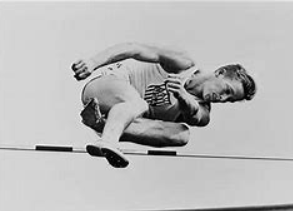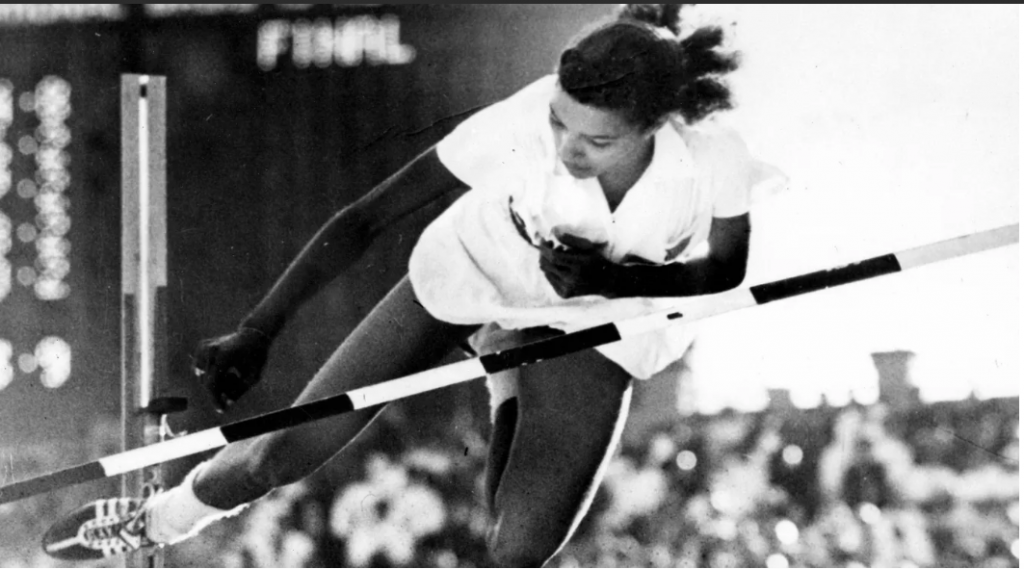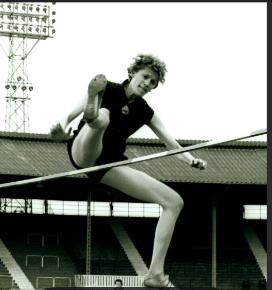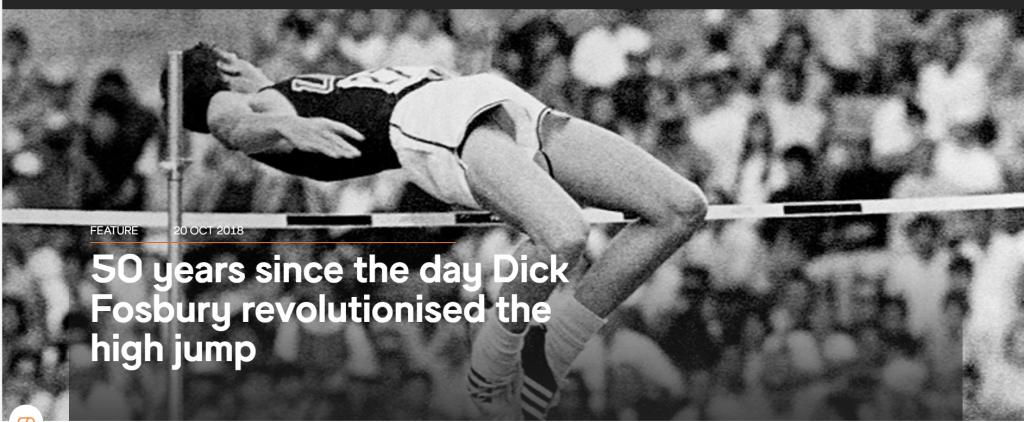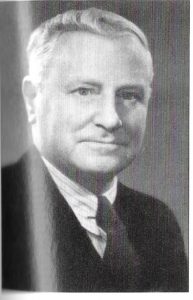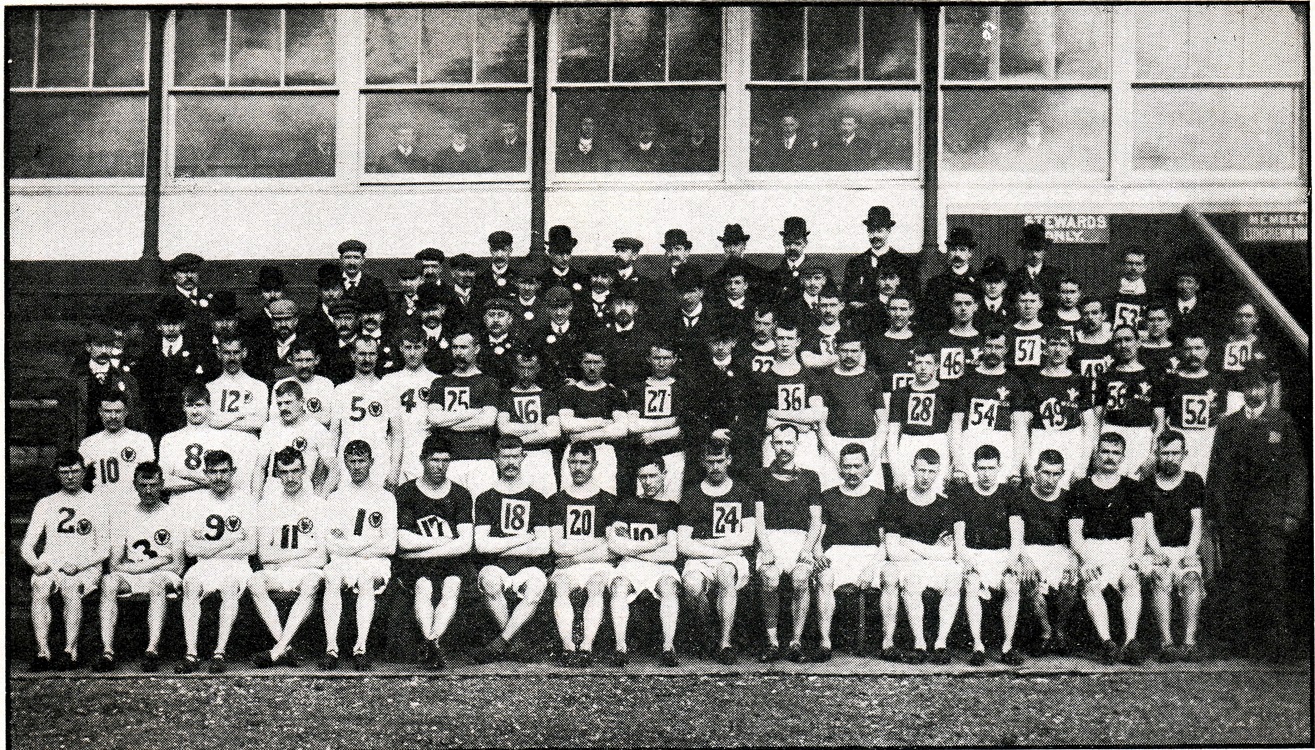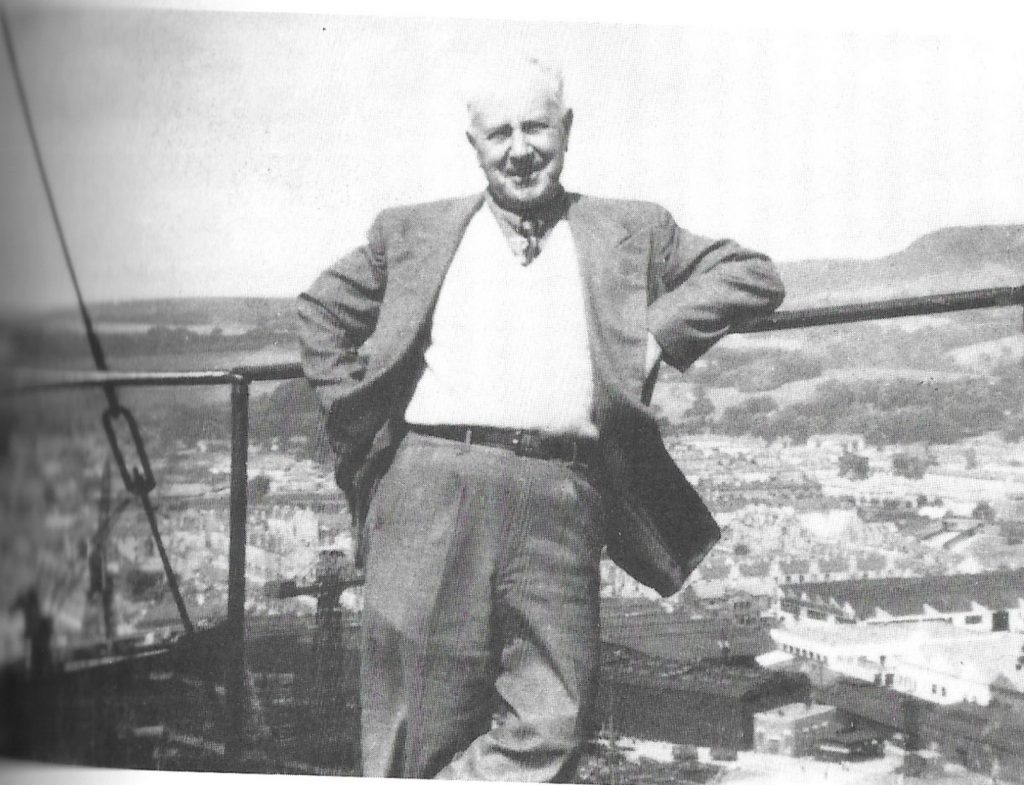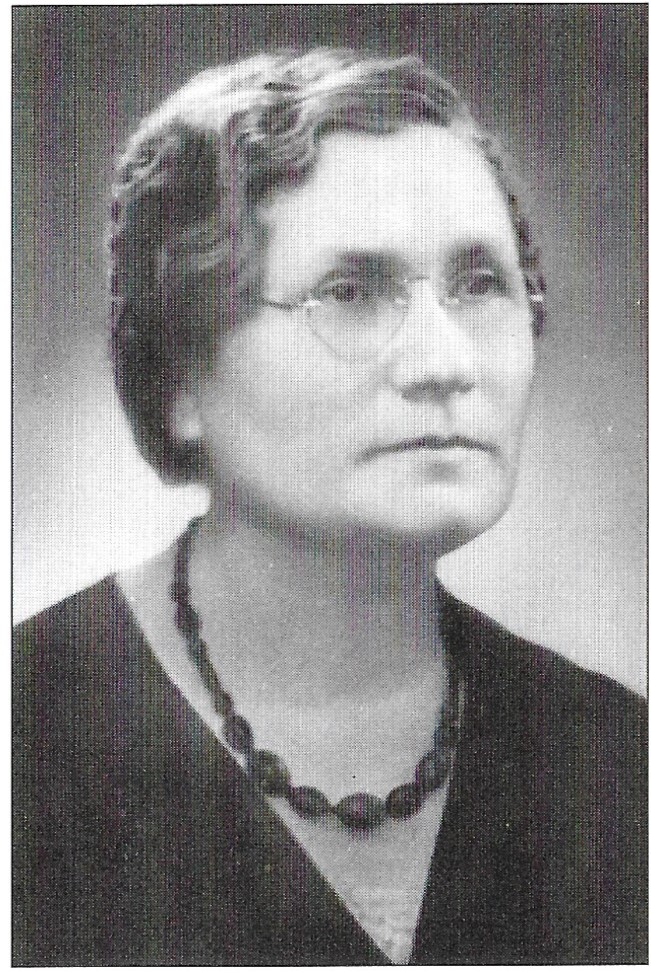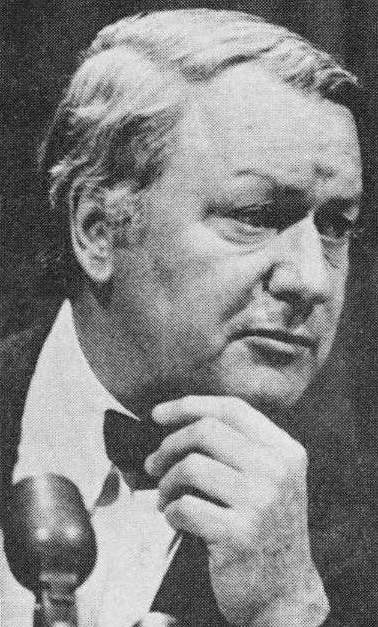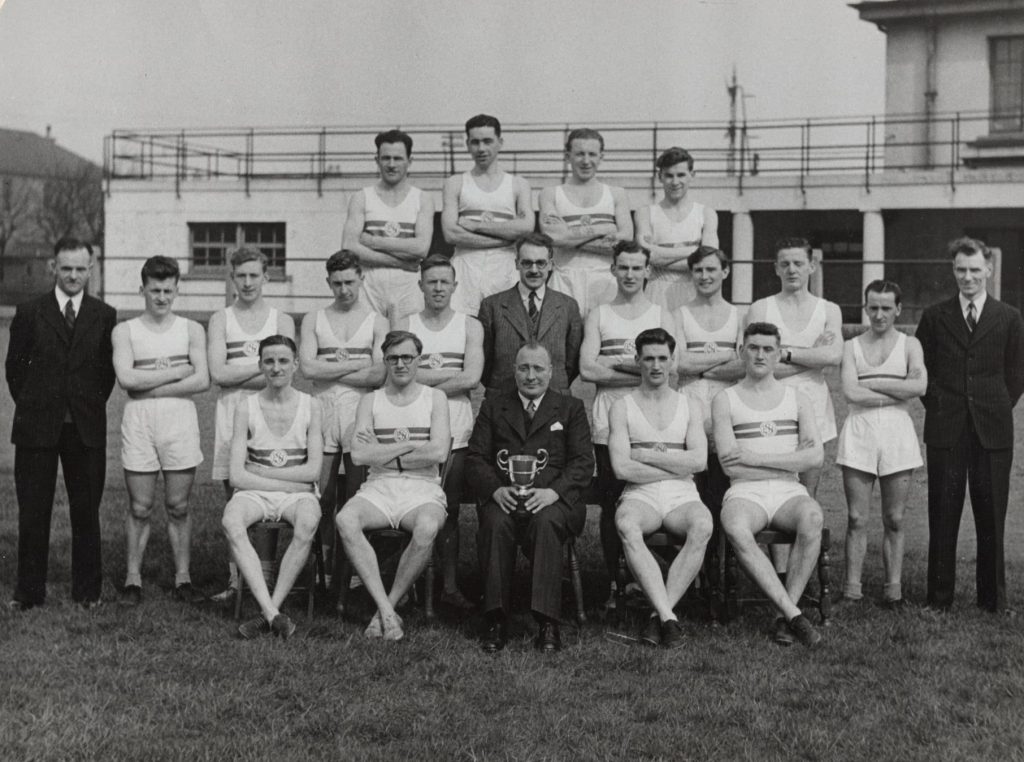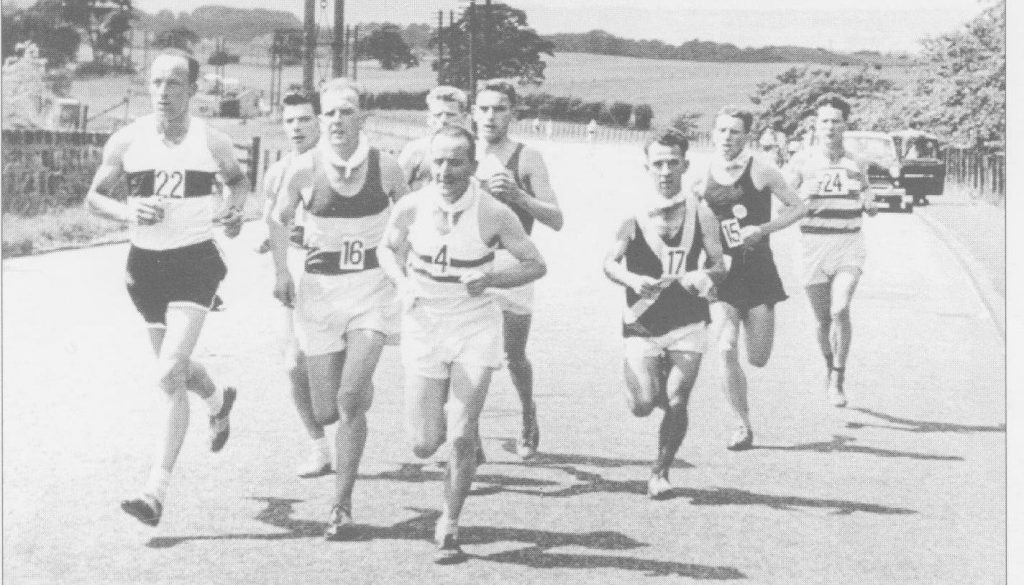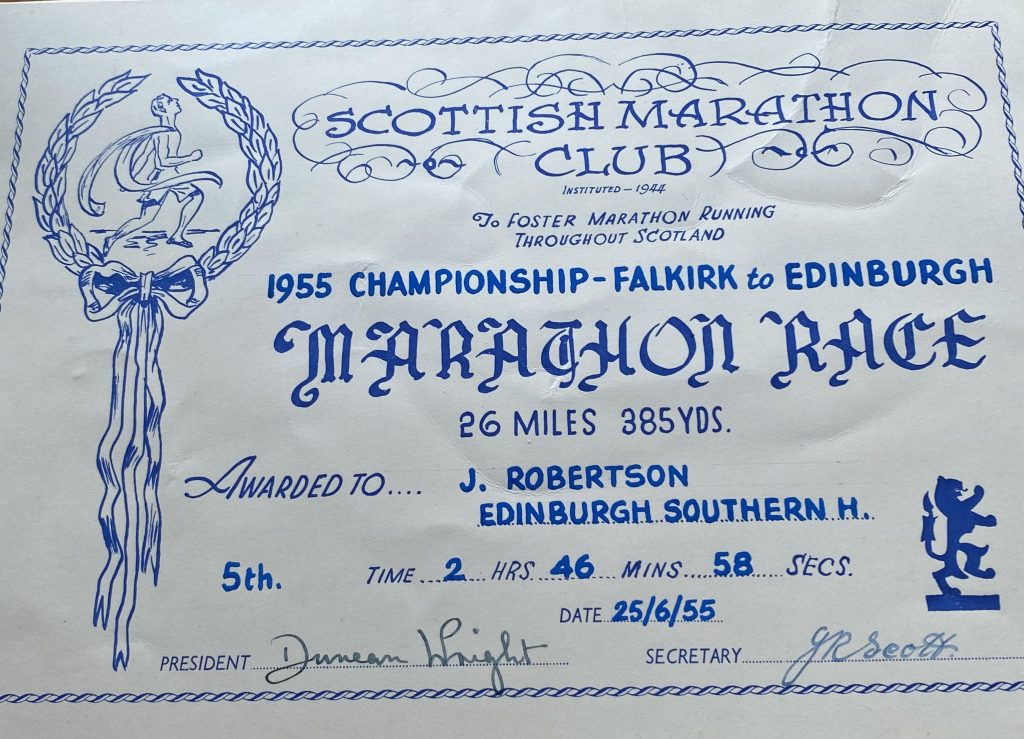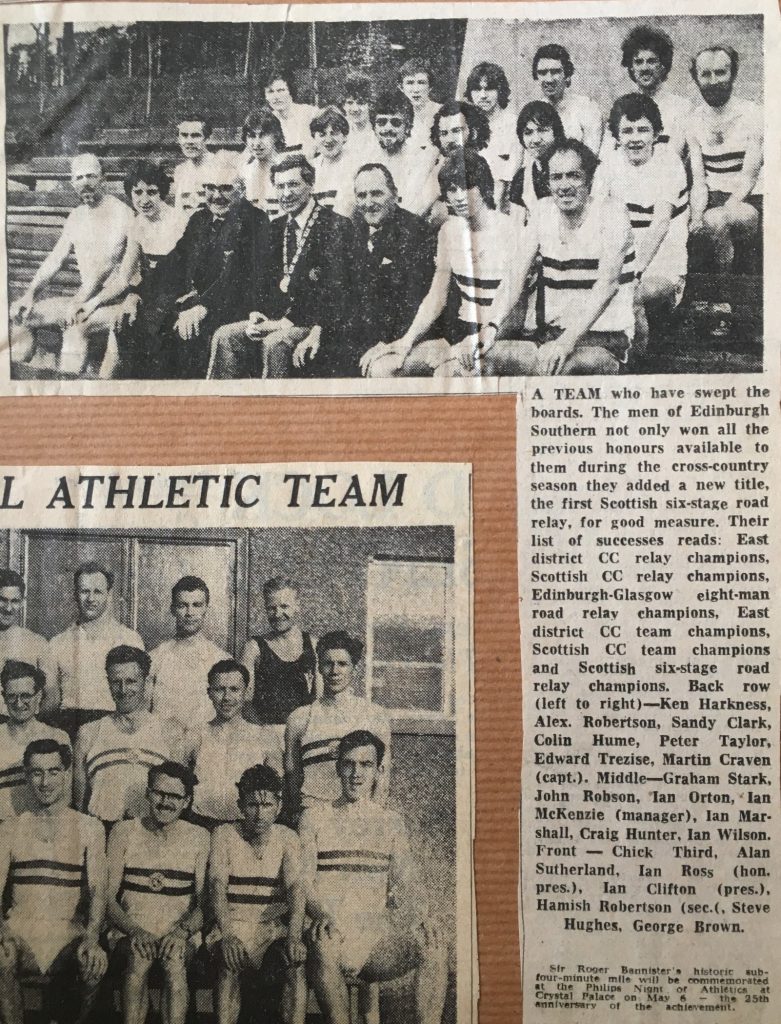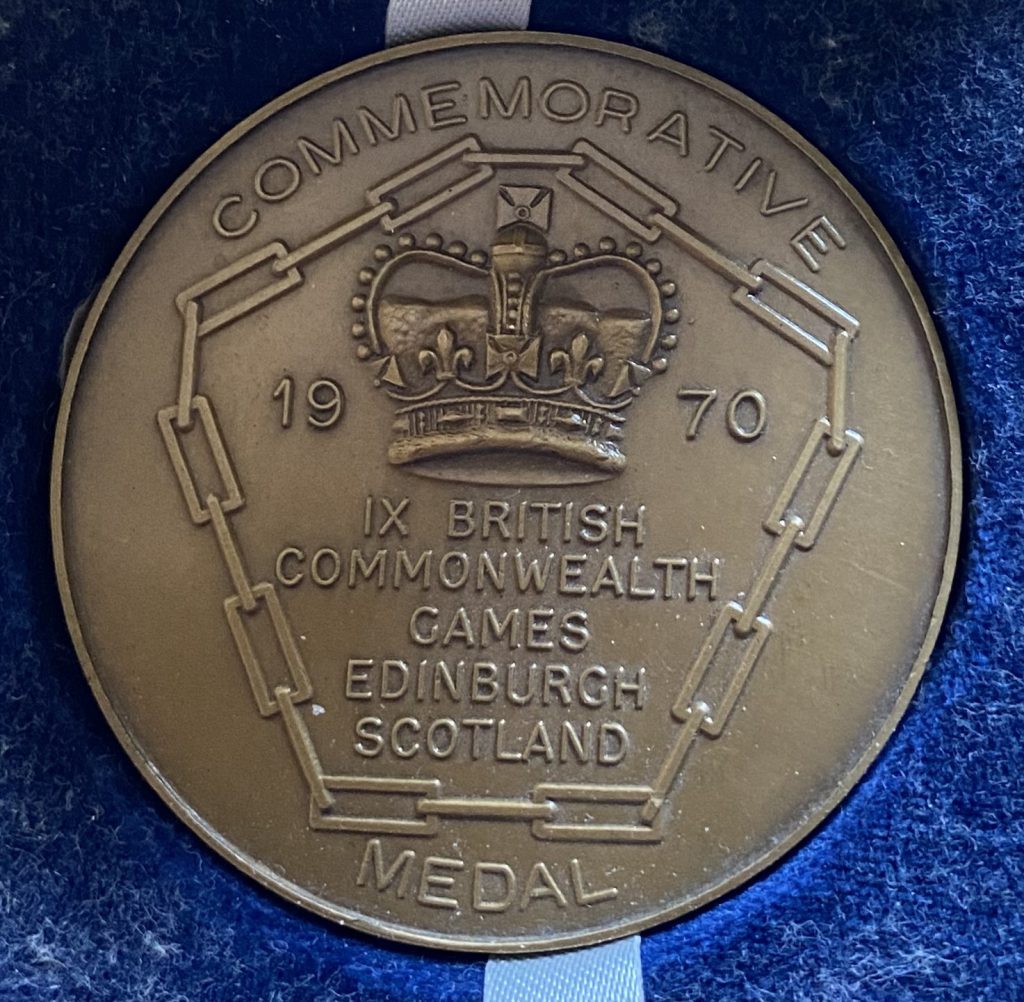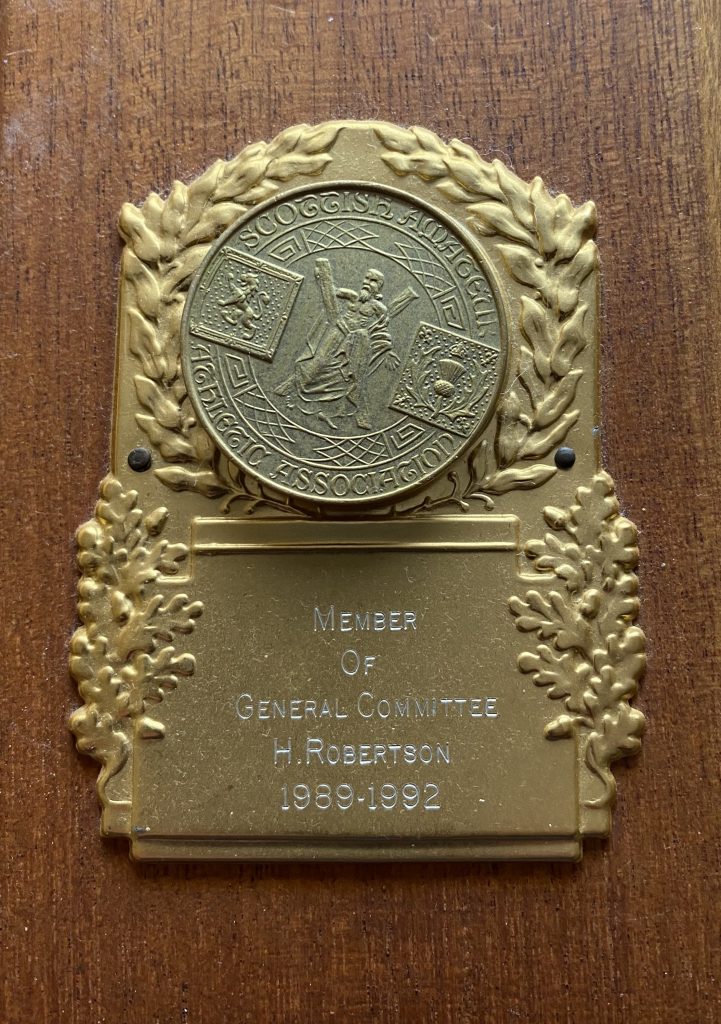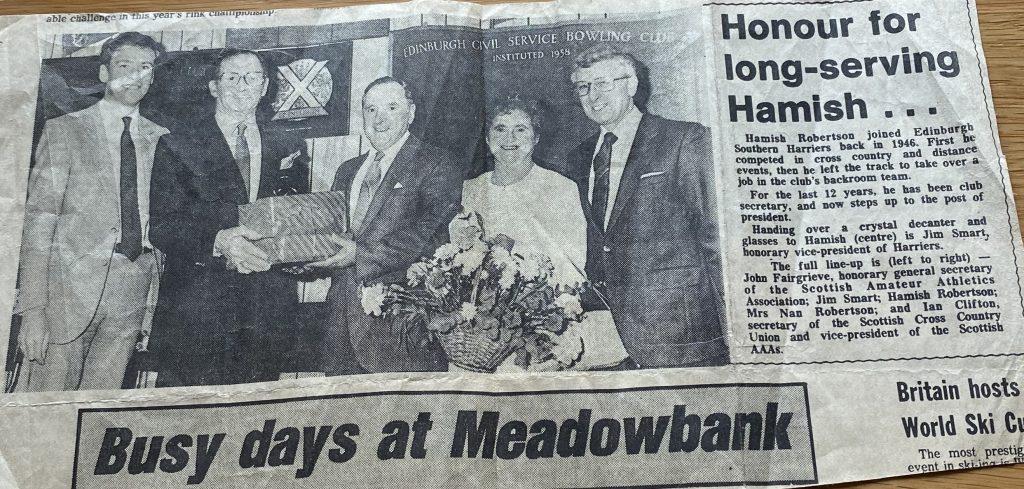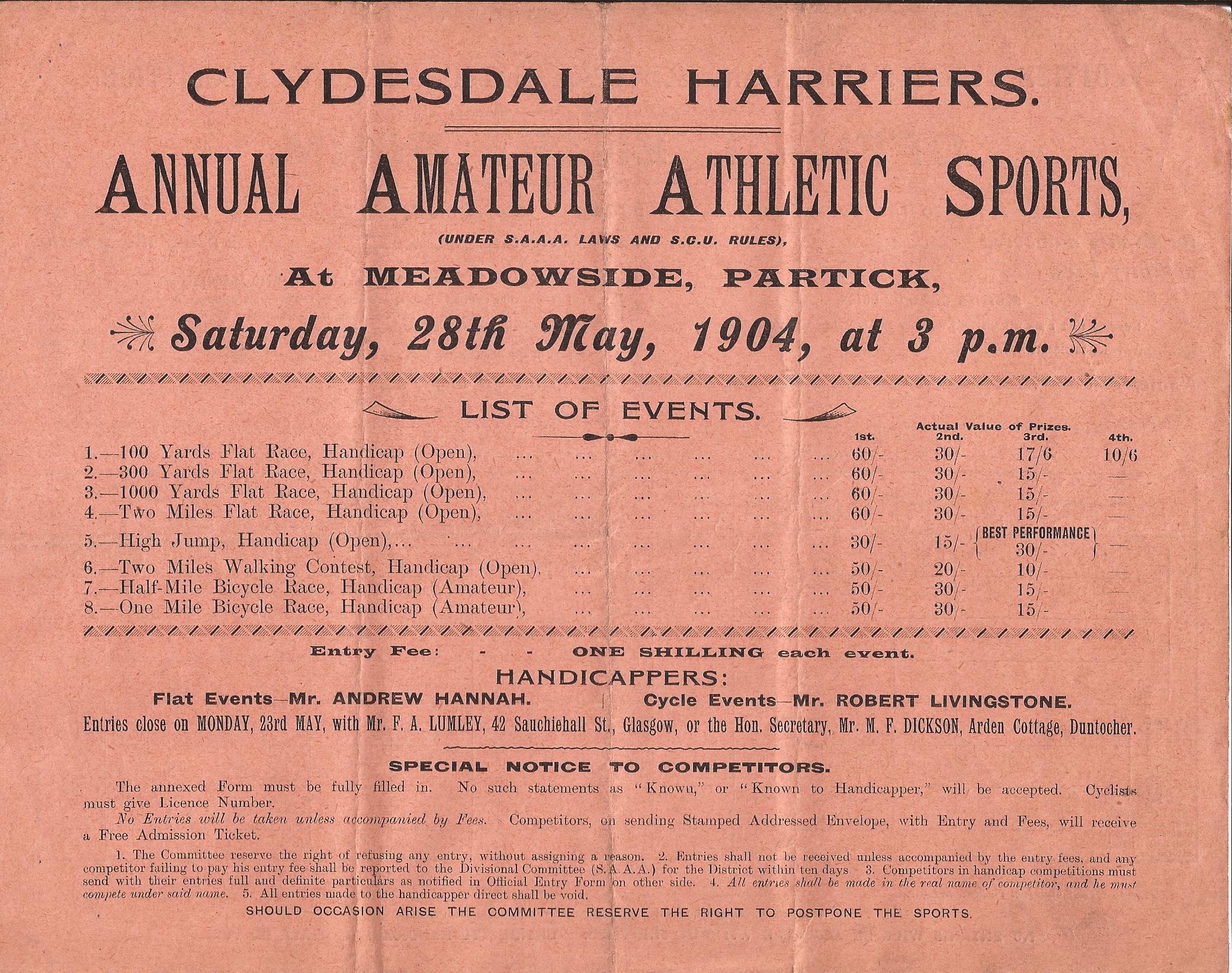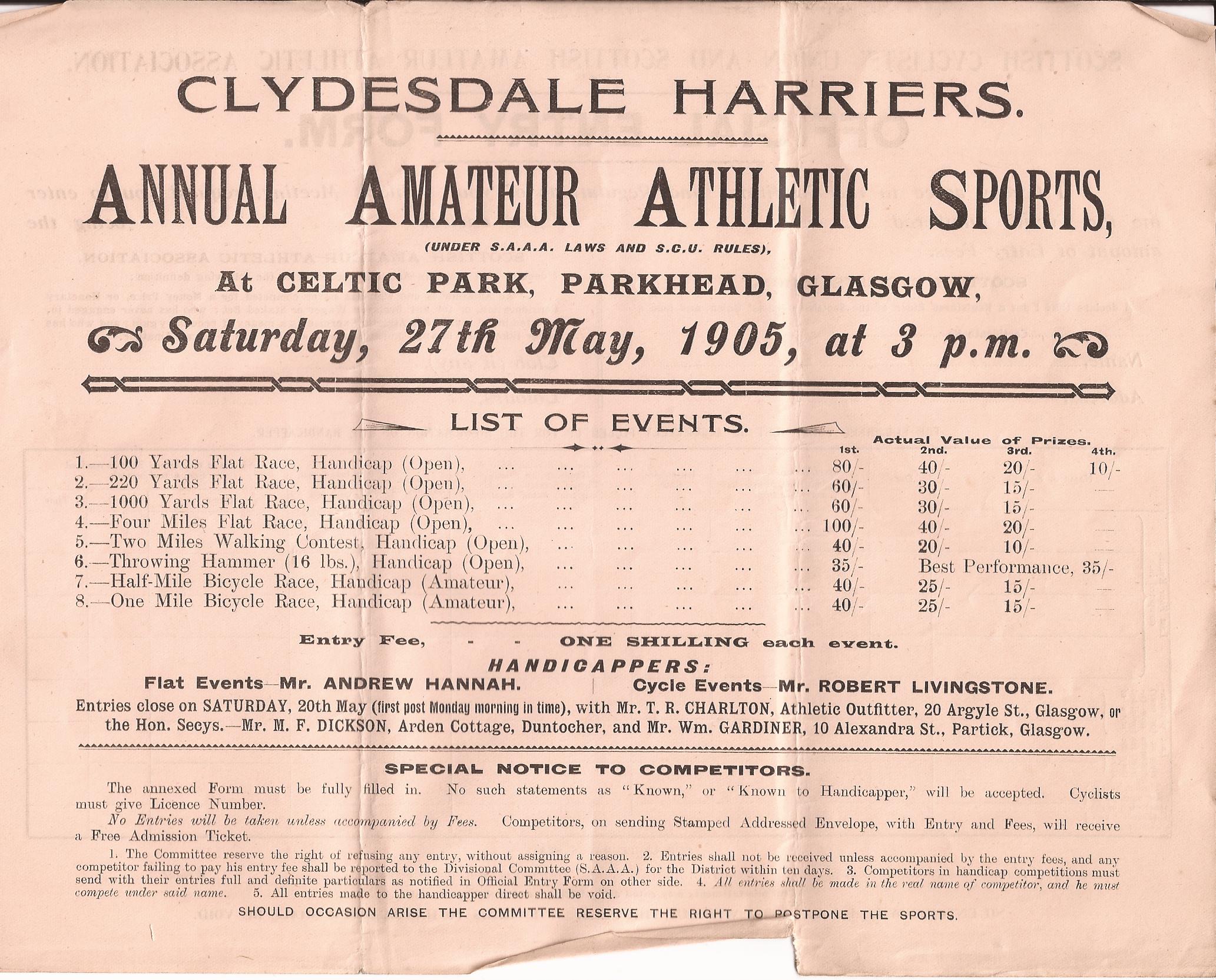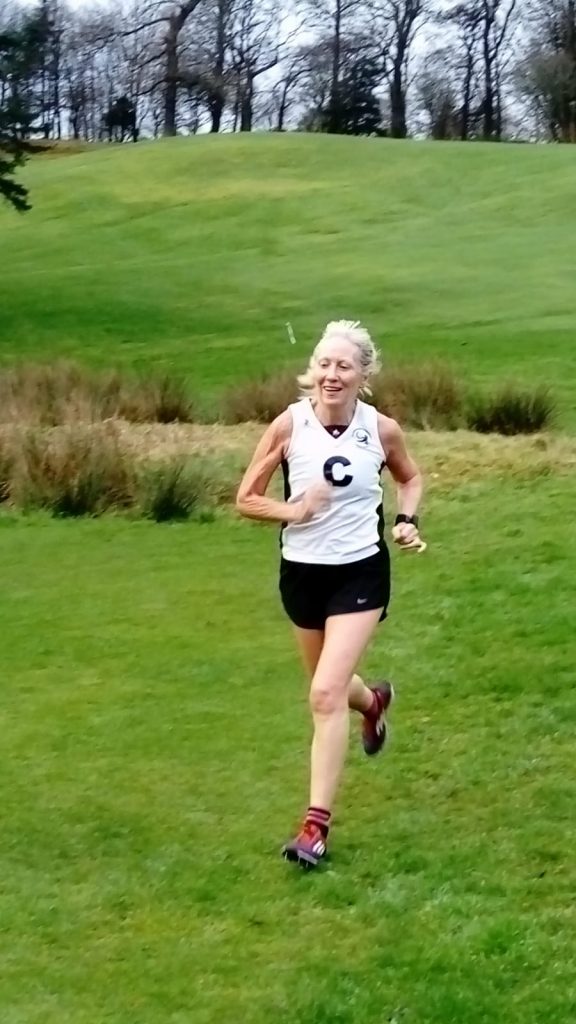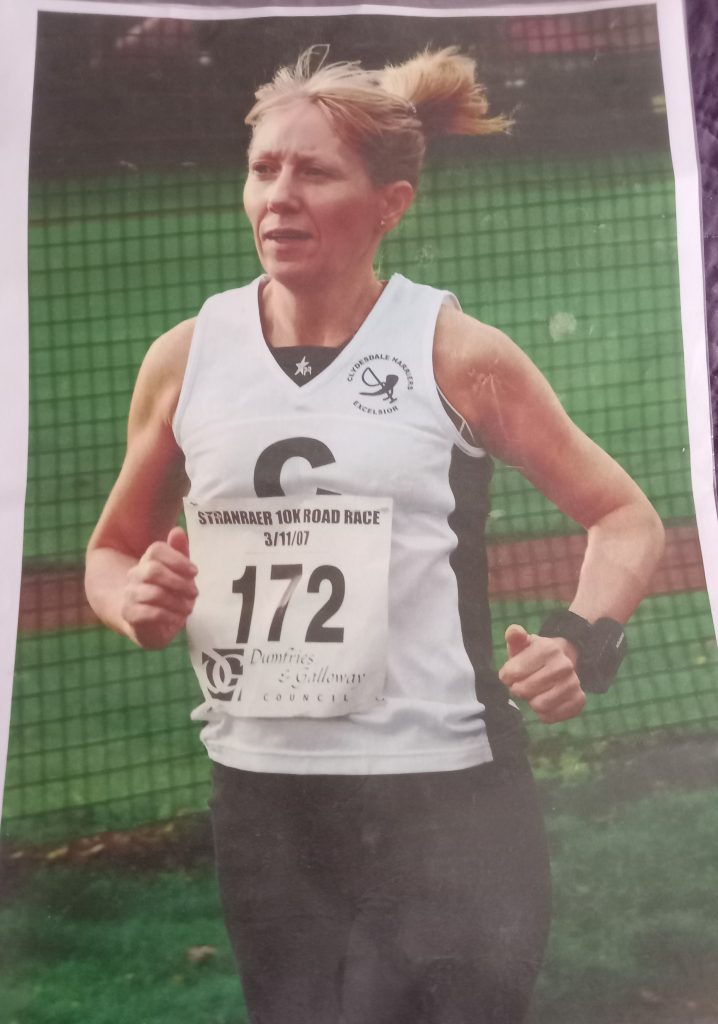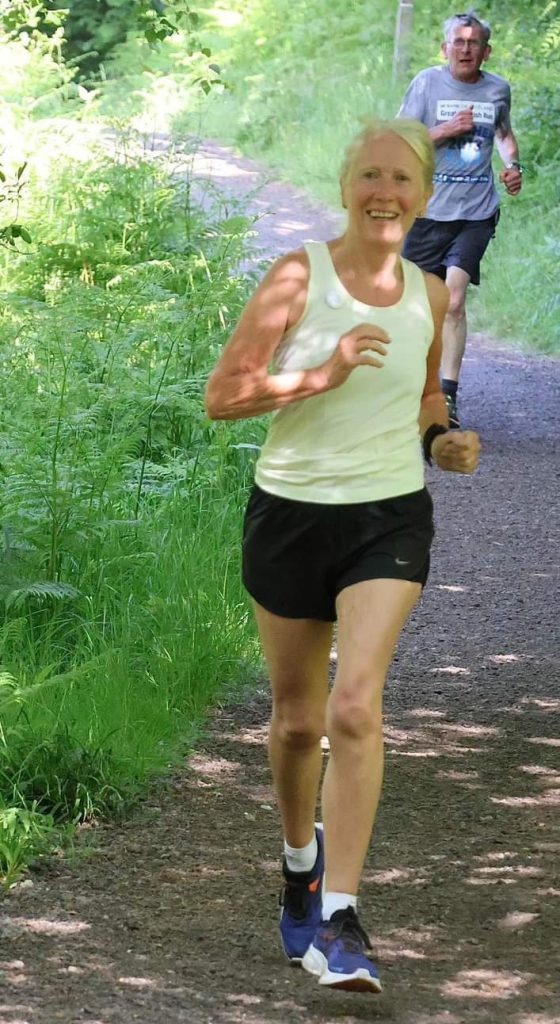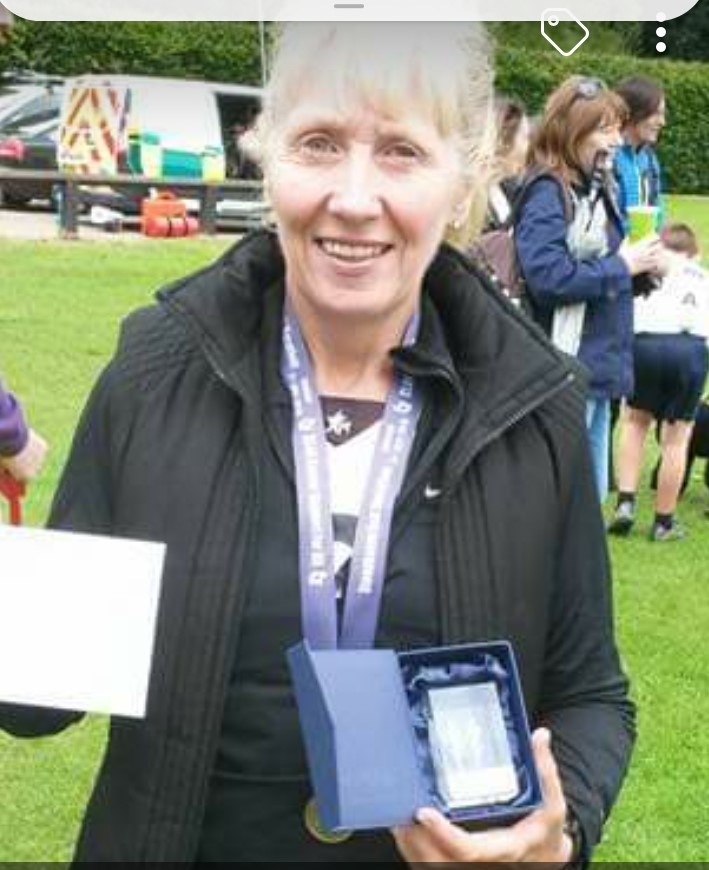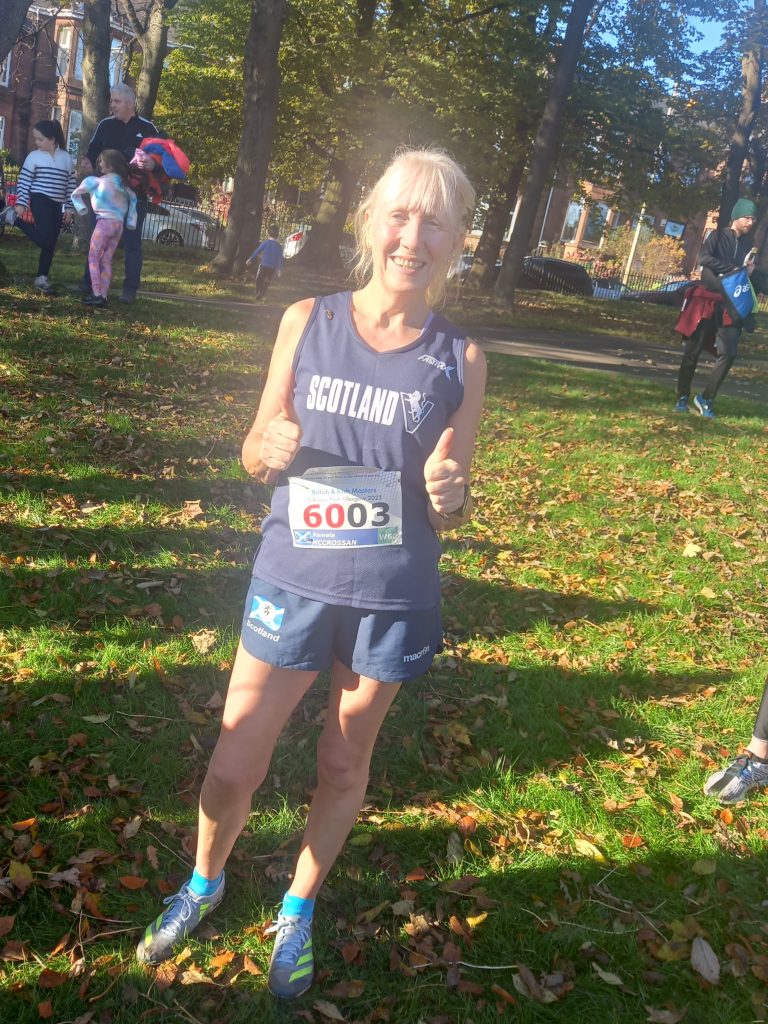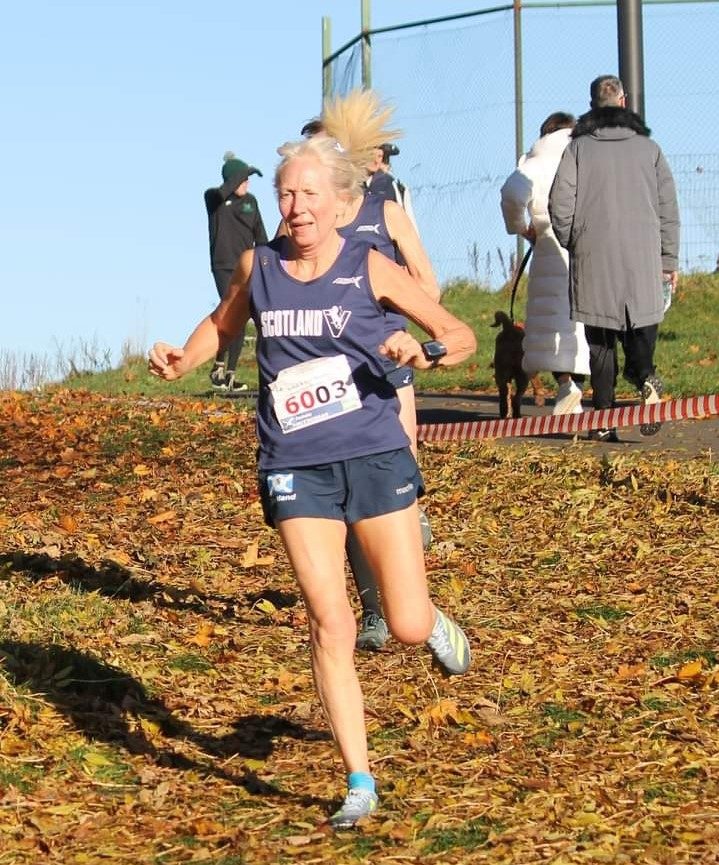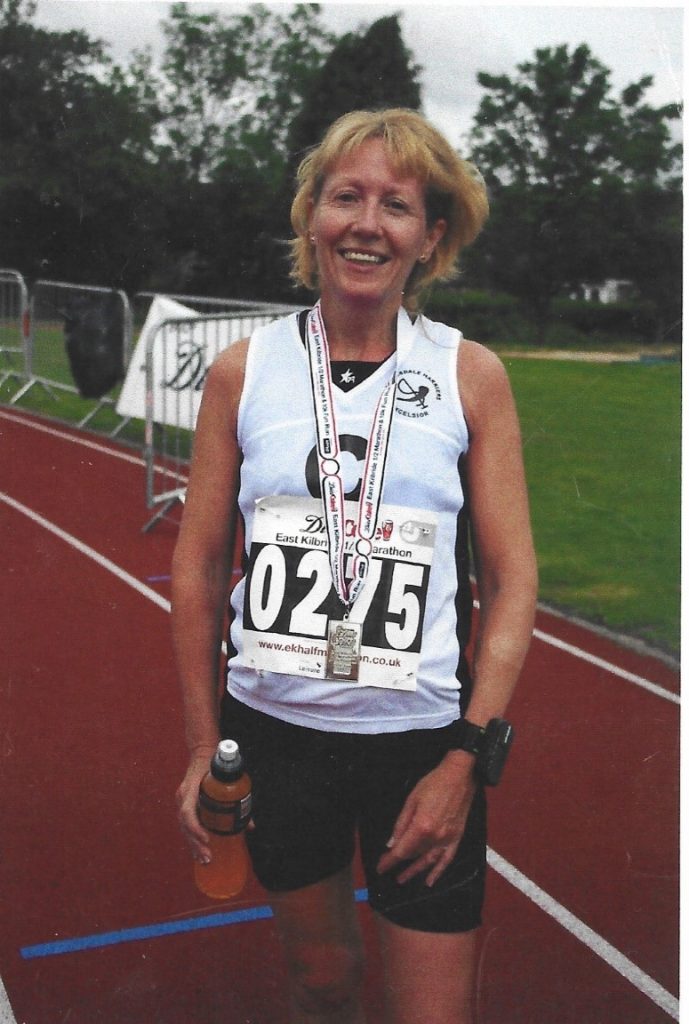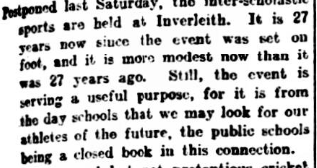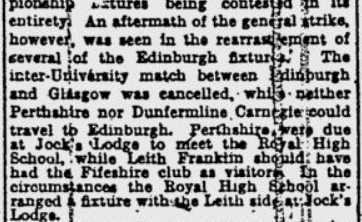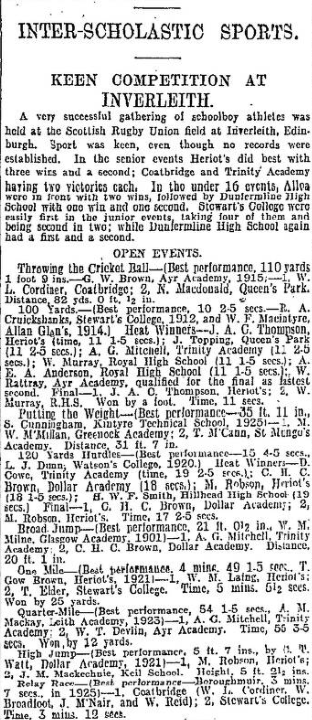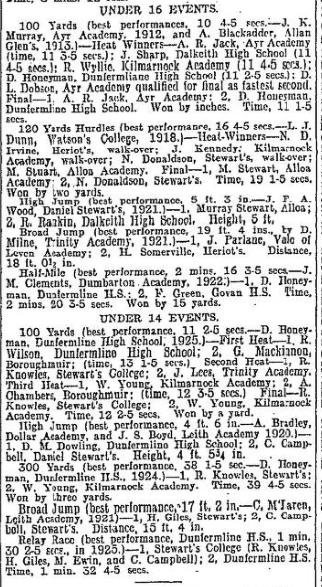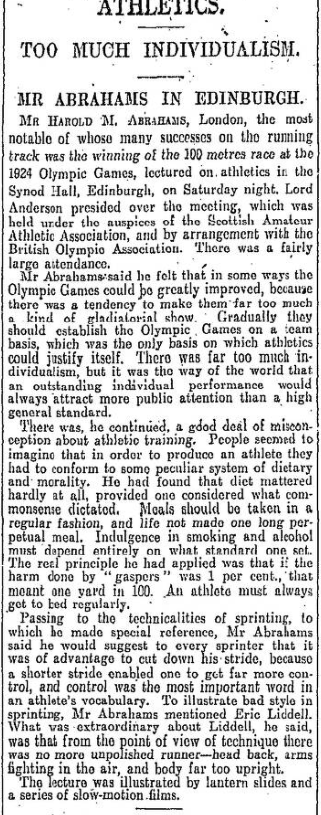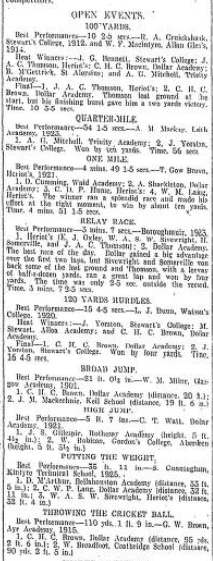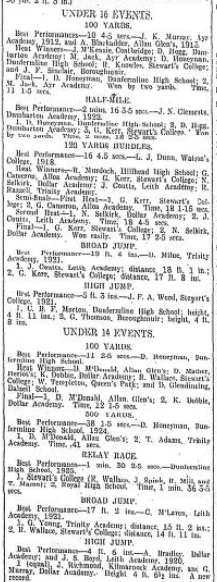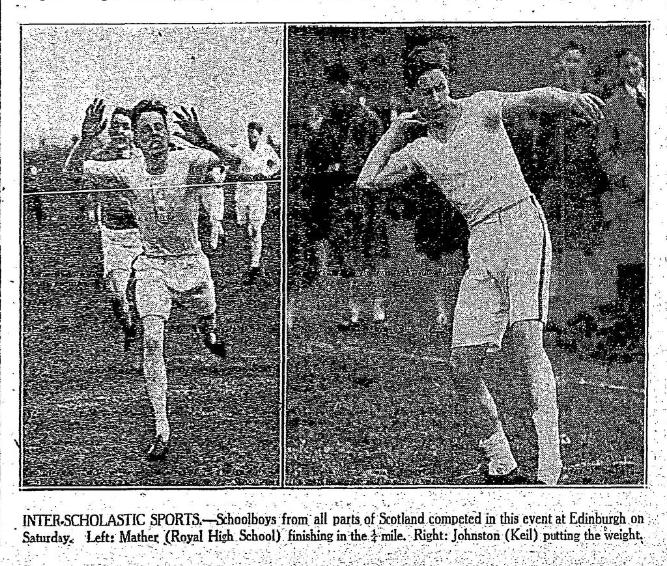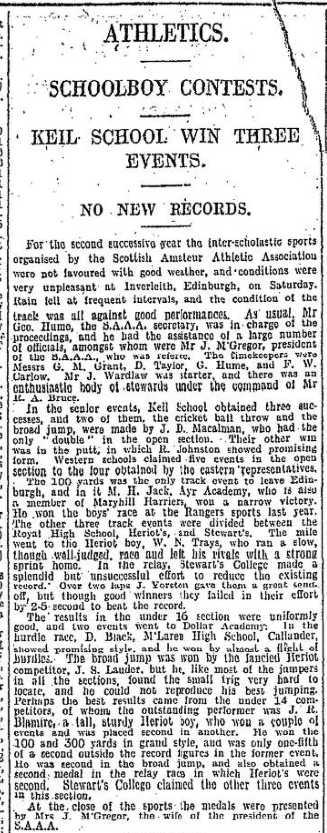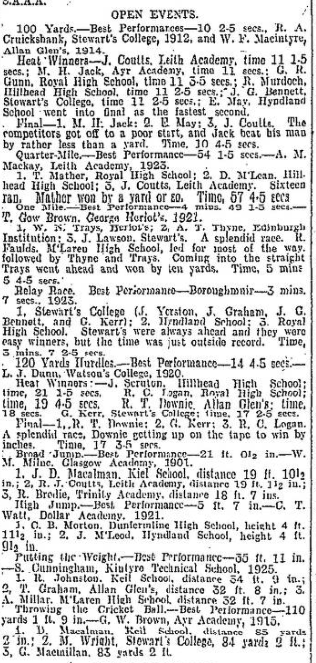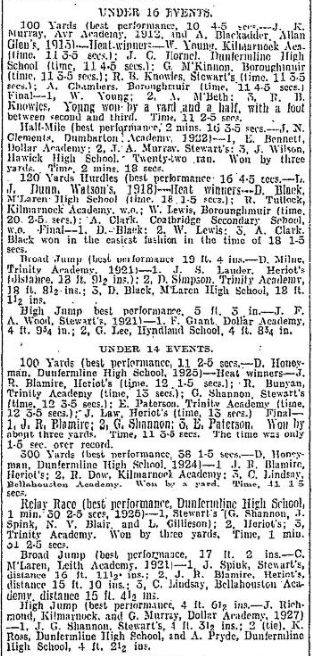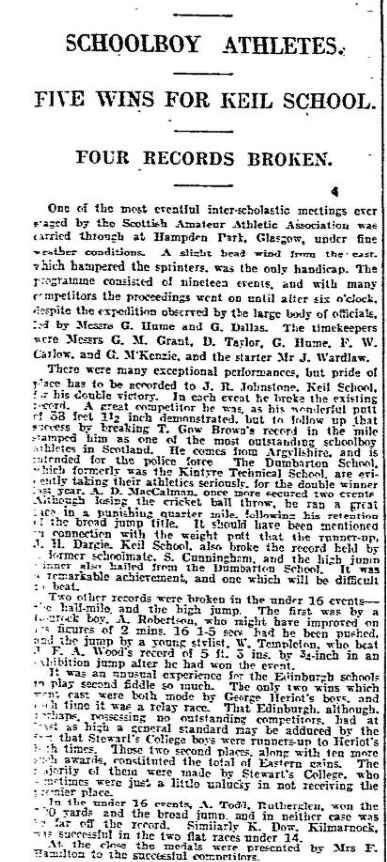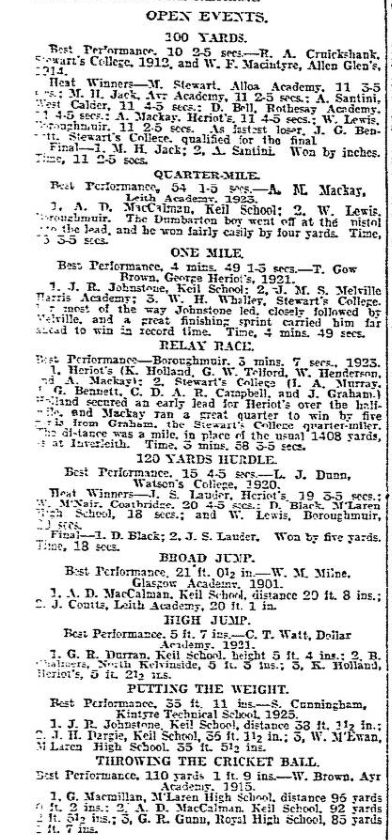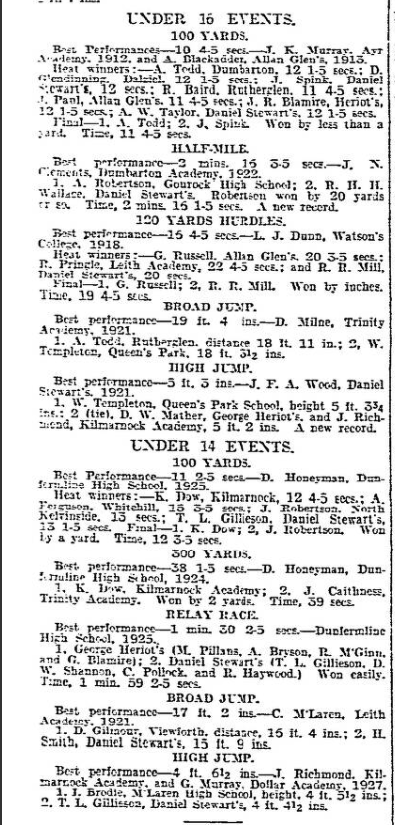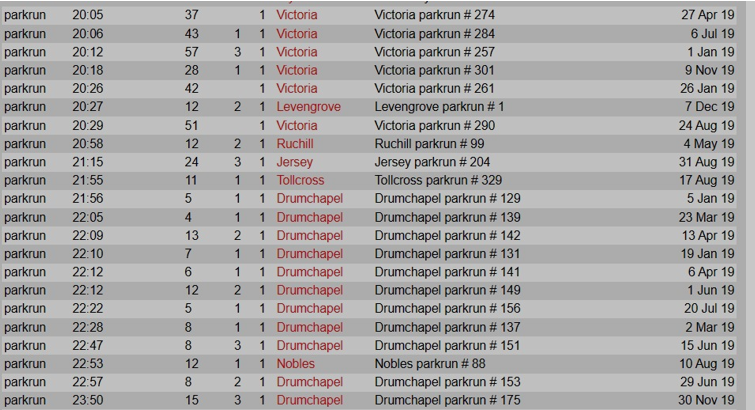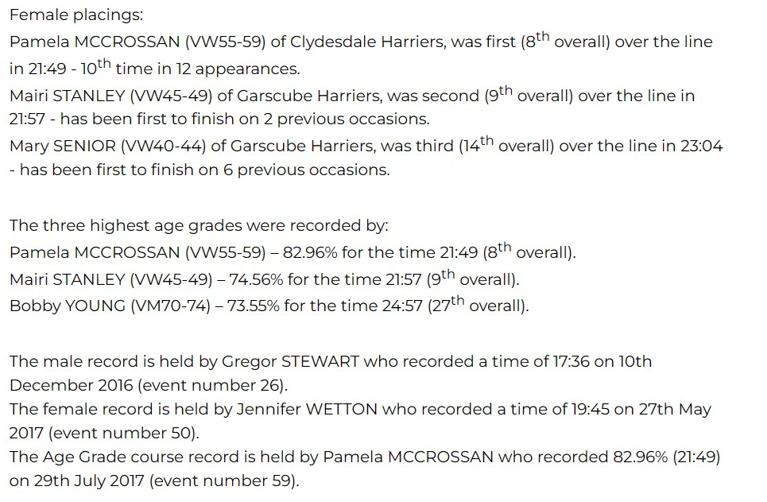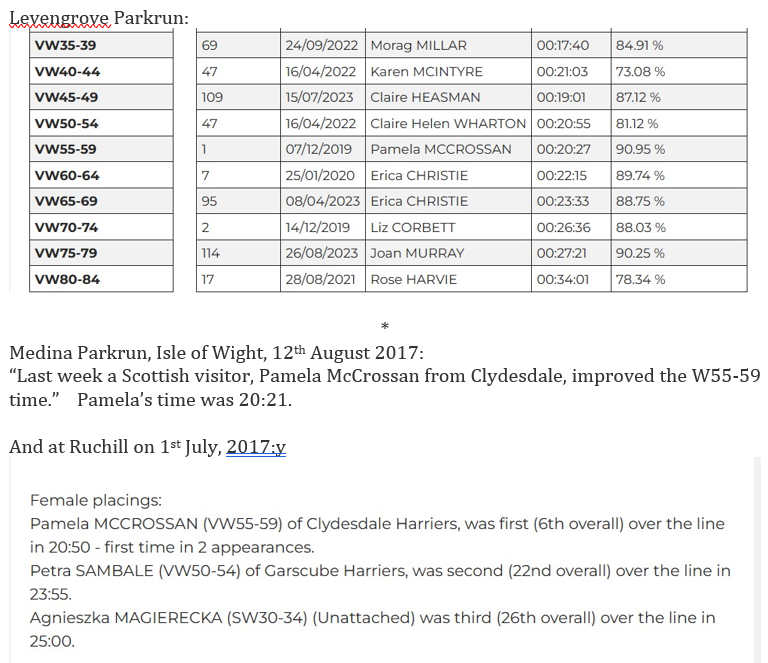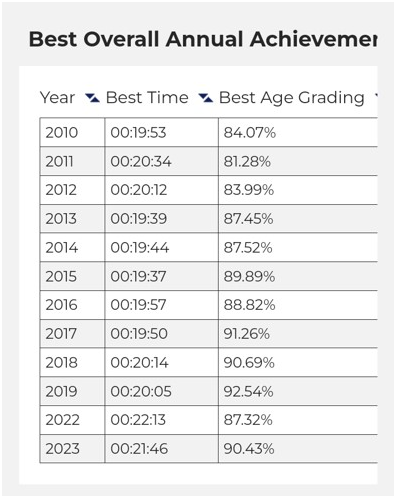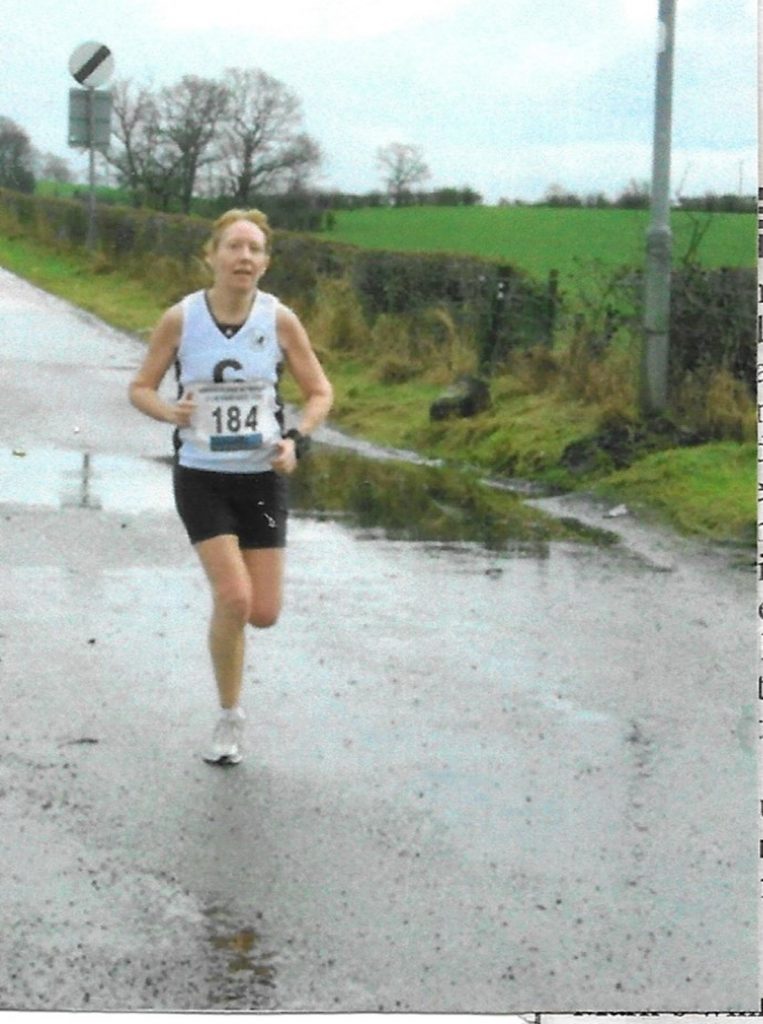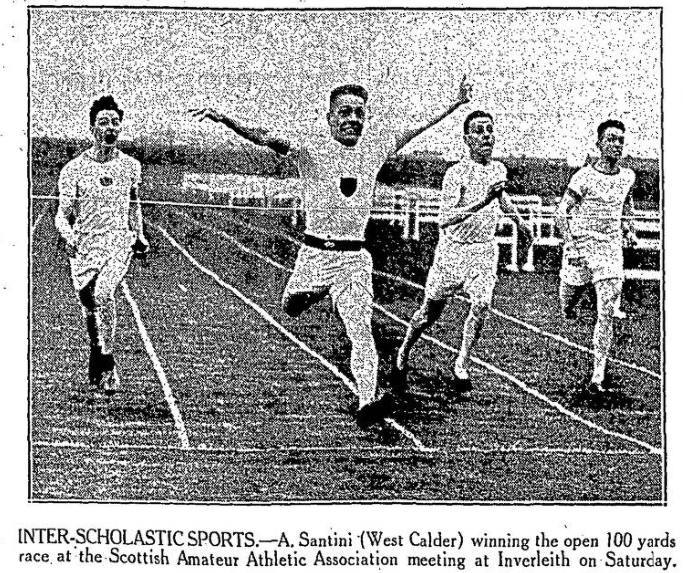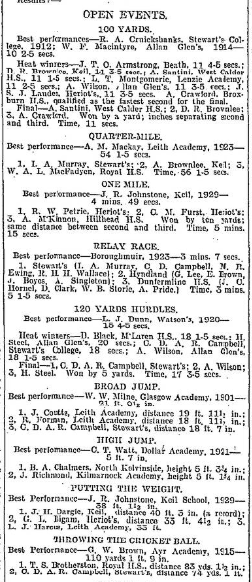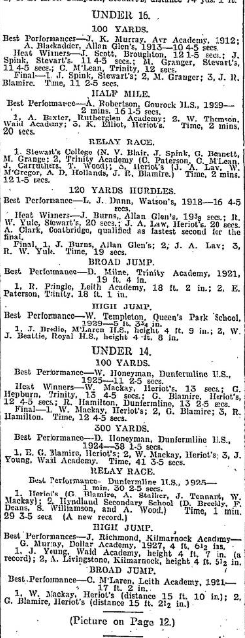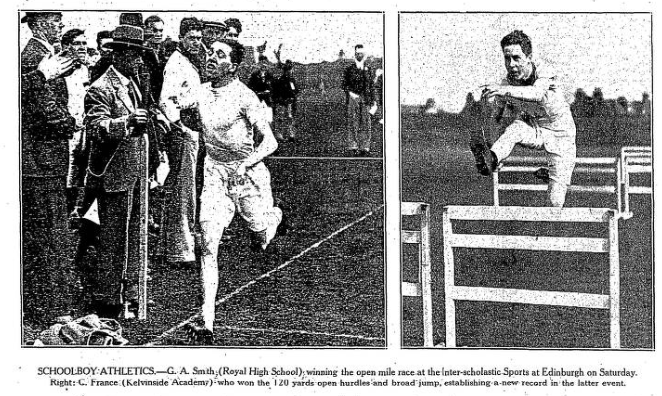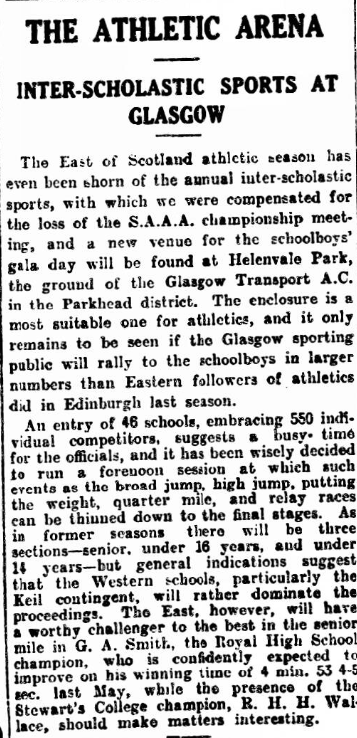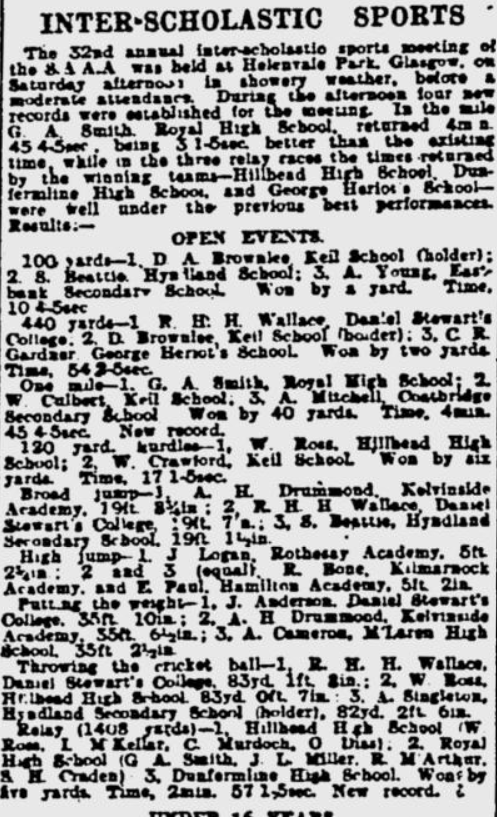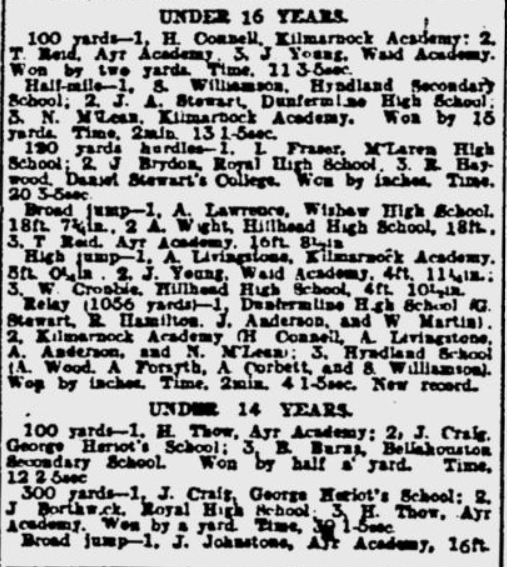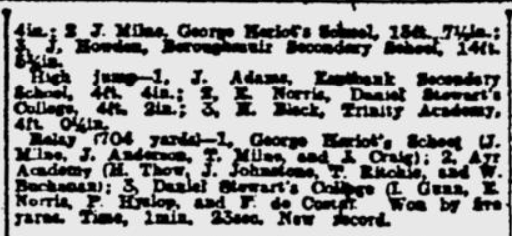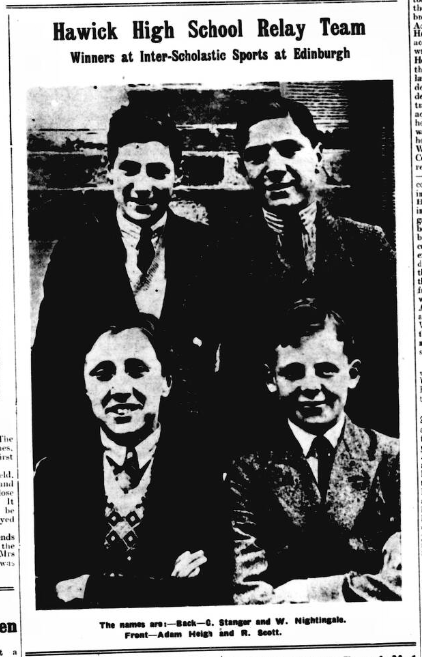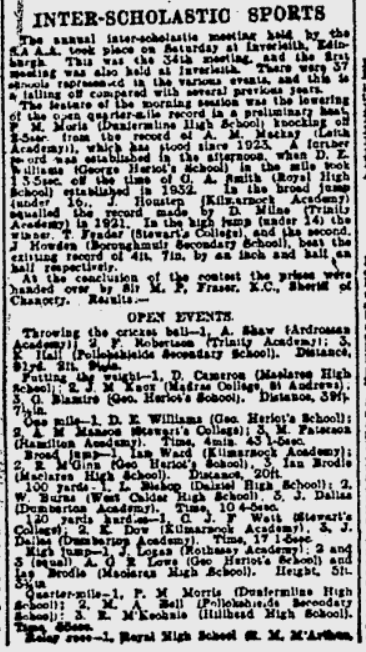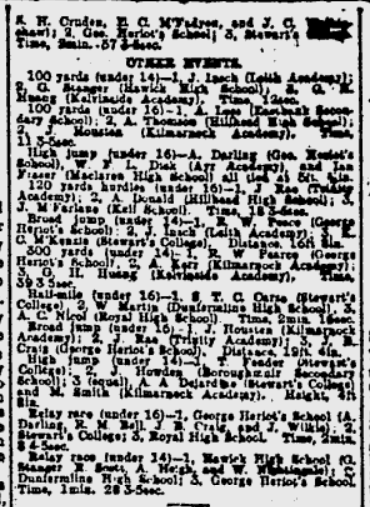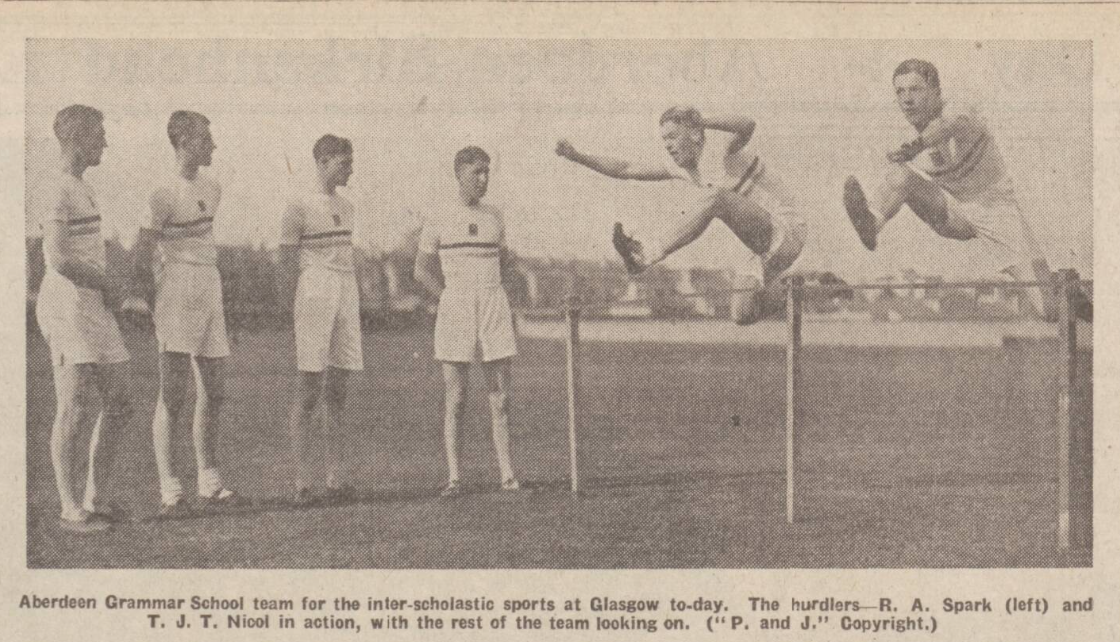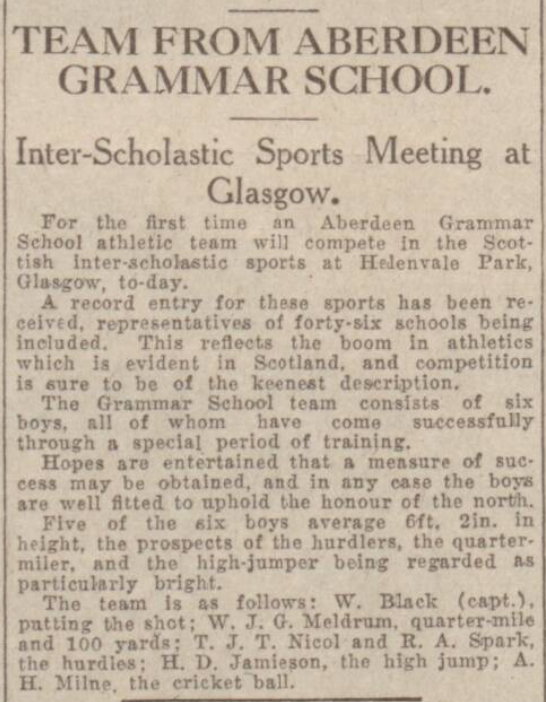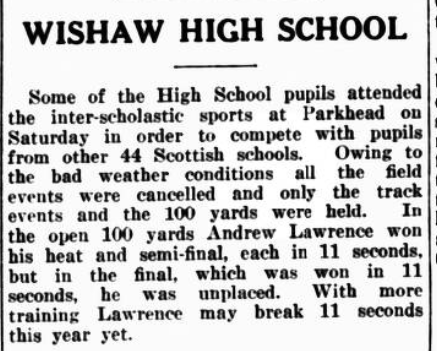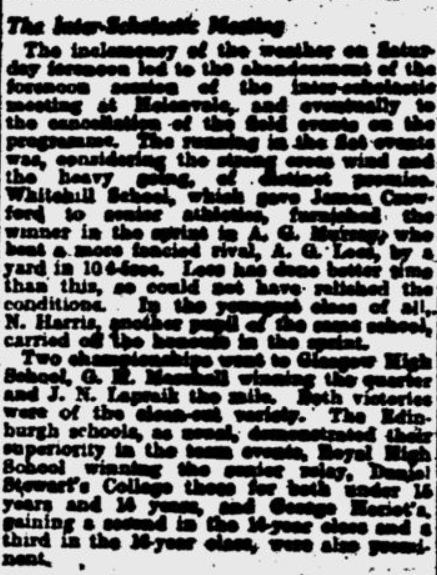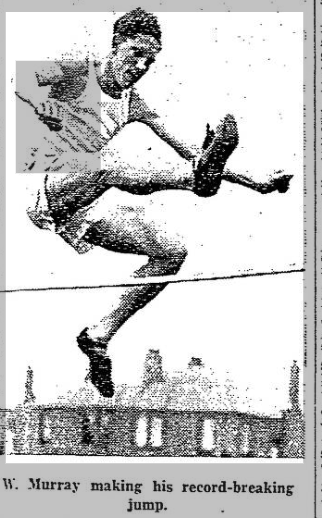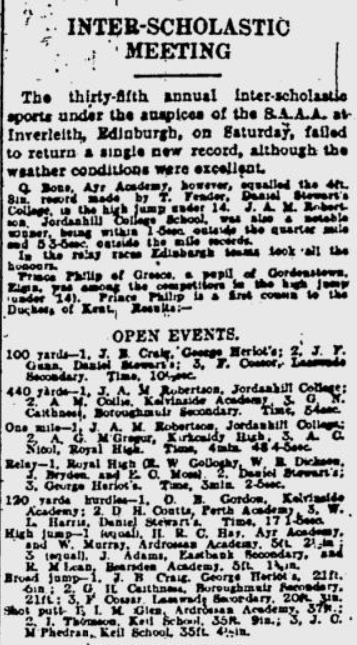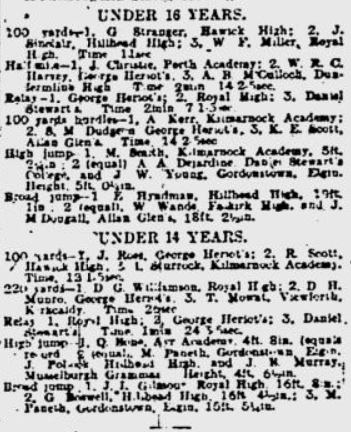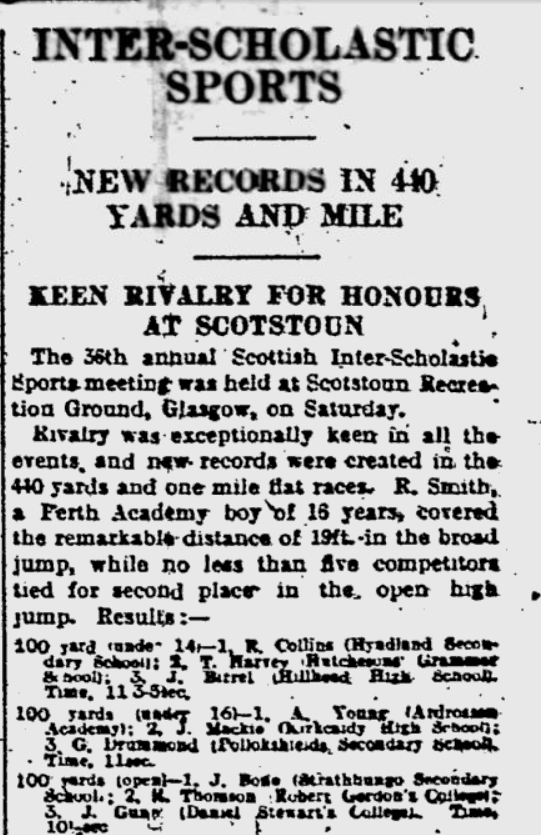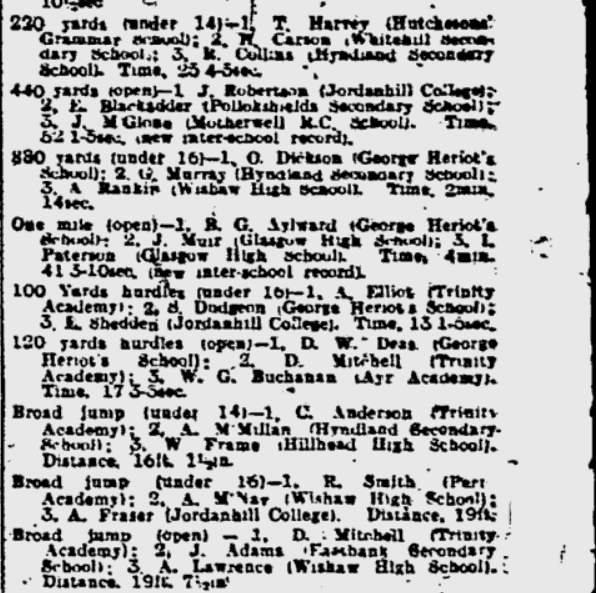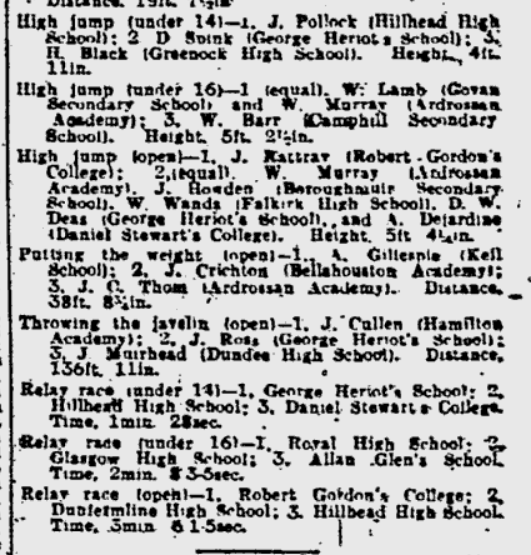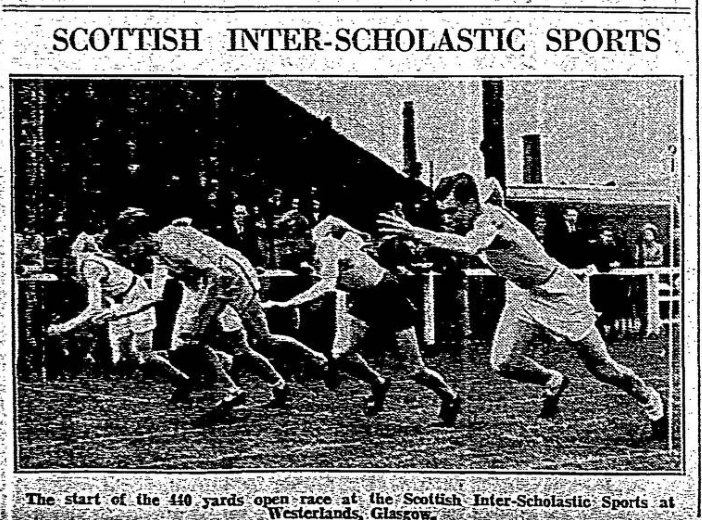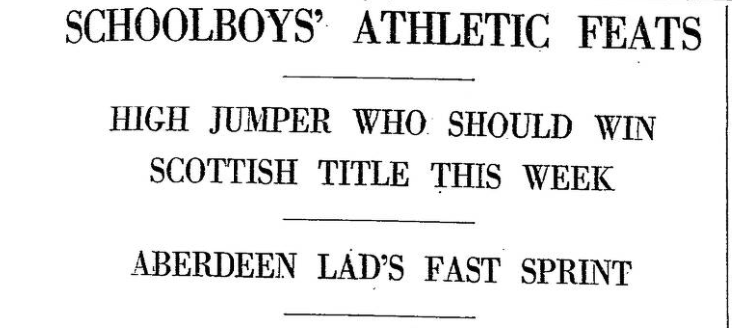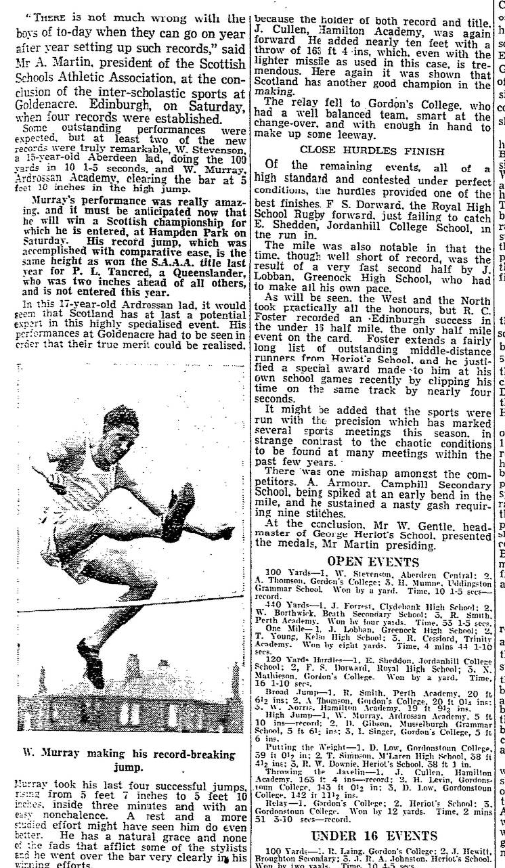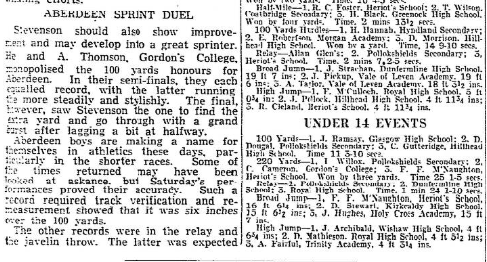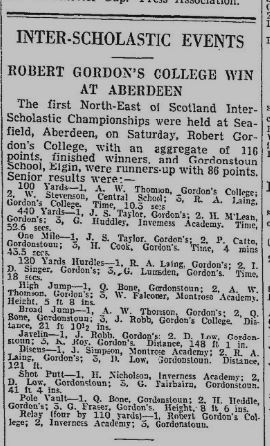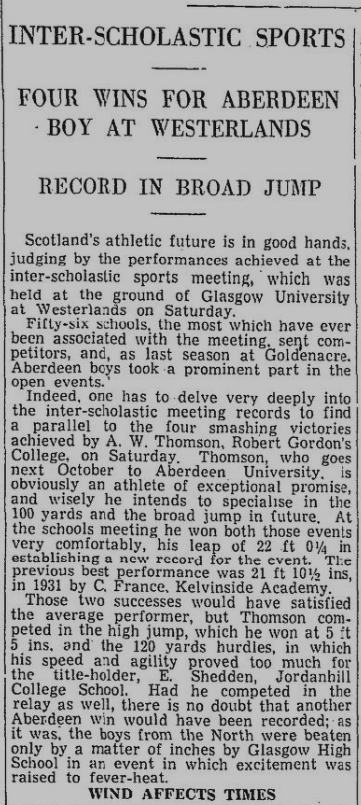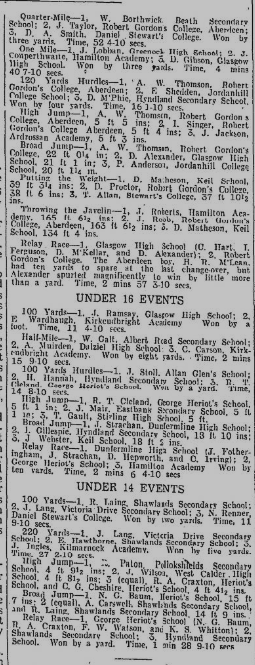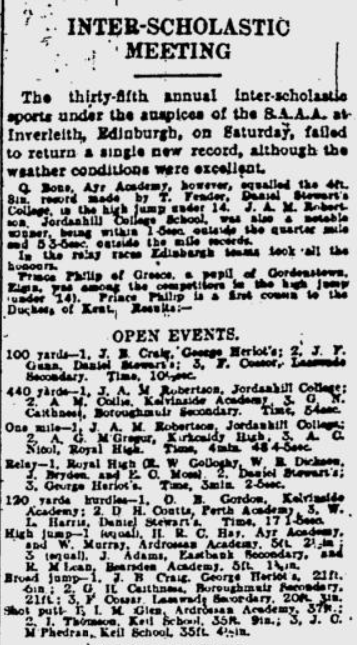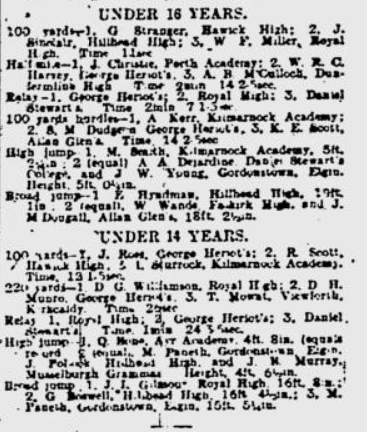A quite superb coach of all disciplines, Tom McNab’s expertise was used to help such decathletes as Norrie Foster, Peter Gabbett and Greg Rutherford. He also has an encyclopedic knowledge of the various professional Games meetings – Highland Games, Border Games and all those in between. He comments on all of these in this account of the evolution of the Jumps – High, Long and Triple. Incidentally, he refers to Guts Muths right at the start – there is an extract from Wikipedia of the gentleman at the end of the account.
THE TECHNICAL EVOLUTION OF THE JUMPS
by Tom McNab
Though 18th century European physical educationists like Guts Muths clearly show students jumping, it is in the rural games of Great Britain that high jumping undoubtedly found its first competitive expression. This being said, we hear in a French work by Guillaume Depping of the early 19th century English jumper, John Ireland : “with a furious bound, he cleared a bar suspended sixteen feet (4m.90) above the ground.” Just so. Ireland is referred to in several 19th century works, but mostly as an acrobat rather than as a competitive jumper. Depping’s book tells us something of the uncertain nature of track and field athletics of the period and the lack of critical faculty.
The first records of competitive jumping occur in the Scottish Border and Highland Games in the first quarter of the 19th century. Jumps were ground to ground, without advantage of spiked shoes until the middle of the century. It was in the 19th century Border Games that jumping of all kinds found its most diverse expression. This meant also the standing jumps, multiple hops/steps and an event closely aligned to high jump, the hitch and kick, of which more later .
The best early height recorded in Border Games was 1m.60 by Thomas Anderson of Innerleithen in 1829. “Unlike most jumpers, he had a straightforward technique, in place of the side jump”, said an account of the time. This is clear indication of a primitive “Fosbury” layout, feet first, ensuring a safe landing, or side-on Western Roll. Other jumpers were probably using an upright, “scissors” technique.
Border jumpers took high jumping to close to 1m.70 by the middle of the 19th century, though there is no record of any technical development. This is hardly surprising, as Border Games featured untrained, barely literate, farm labourers infrequently competing barefoot on rough fields, within a poorly-developed competitive structure.
By the final quarter of the century, amateurs had arrived, bringing with them a high volume of literate, well-equipped athletes, often working from cinder surfaces and with them came the first athletic literature. With the rapid development of the railway system, it had also earlier brought into being a circuit of élite professional athletes who travelled Scottish rural games in the May-September period.
One of these was the great Scottish all-rounder, Donald Dinnie, also the world’s most versatile wrestler. Dinnie was almost certainly the first man to clear 6’0” (1m83) in 1868, at the age of thirty one. What is interesting is that Dinnie took off from the inside foot, lying along the crossbar on his side, in what was probably a primitive Western Roll. Equally interesting is Dinnie’s observation, during his 1870 American tour, of the Scottish American, James Goldie, diving over the crossbar in what was almost certainly a primitive “dive” straddle.
In 1876, Brooks (Oxford University) became the first jumper to officially clear 6’0” (1m83), achieving 6’2½ “ (1m 90). Brooks deployed the same frontal feet-first method (a reverse flop) as the Scot, Anderson, had possibly done almost half a century before, described later by Americans as the “shoot” method.
Sweeney clearing the bar (approach from the right)
Almost twenty years later, in 1895, Mike Sweeney, an Irish-American, made the first great technical break-through, creating the Eastern cut-off. This was essentially a modified “scissors” from a curved run, and had probably been deployed in one form or another for some years before. Sweeney took the technique to a high level of maturity, securing a centre of gravity position close to the bar, with a flat layout, clearing 6’55/8”. “I came down to the mark on my take-off exclaiming “I’ve got it! I’ve got it” and as I jumped I went blind, but I cleared the bar. The next thing I remember was Teddy Roosevelt picking me out of the pit”. At his point, the Border Games “hitch and kick” returns, strangely in the New York Caledonian Games of 1898. The event involved jumping to kick a tambourine suspended from a crossbar. Not surprisingly, Sweeney won with a new world record of 9’2”, which still stands.
Less than a decade later, the American, George Horine, is credited with the invention of the Western Roll, a hop-over jump involving take-off from the inside foot, not dissimilar to the earlier technique of Donald Dinnie and of Horine’s contemporary Alma Richards. Both the Western Roll and the Eastern Cut-Off describe their geographical derivations.
George Horine in the Stockholm Olympics
The rules on “diving”(heads ahead of hips) produced in 1924 a unique Western Roll variation by the 1924 American Olympic champion, Harold Osborne, who threw back his outside shoulder, marginally improving the quality of his layout. . “In a great many respects my form resembles the Western form..”
No other jumper, to my knowledge, copied this technique until the Scot, Alan Paterson, in 1946.
Then came the American, Clinton Larson. “I take a run of twenty yards or more. My idea is to gradually increase my speed so that by the time I hit the take-off, I am running at full speed”. Larson used a back layout “scissors”, lying flat along the crossbar, and cleared 6’9½” in 1924 in an exhibition. Doherty 2 describes Larson’s layout as inefficient, yet some photographs of the period show him in a surprisingly flat position, in essence a reverse straddle.
Dick Templeton’s Spalding booklet “High Jump” (1928) represents one of the first attempts of American college coaches to produce specialist technical works. Templeton had himself been denied Olympic selection in 1920 for “diving”, (head and shoulders leading hips over the bar), as had later “Babe” Didrikson, an Olympic gold in 1932. “High Jump” covers the full span of layout techniques since the 1890’s, but is the first book to lay a strong emphasis on take-off.
The “step over” technique (the straddle) had been shown in American athletics literature of the early 1920’s, but no-one seems to have laid claim to its invention, though the Texan, Bill Stewart, is often given the credit. Stewart had been a rancher. “At first, he took the barbed wire fences with the scissors high jump form, but found this both destructive to the seat of his trousers and unpleasant anatomically …. He was forced to use the belly roll for with this form he could hold down the barbed wire as he rolled over it. I never believed Jim’s yarn either” – thus his coach Dean Cromwell. The American Dave Albritton, became the first straddler to medal in the Olympics of 1936, though he used the Western Roll until the later heights. The Berlin Olympics was probably the last Games in which every technique in previous history was displayed.
In the late 1930’s, the “diving” rule was relaxed (though it stayed in IAAF rules until 1951), permitting more advanced layouts. Lester Steers (USA) cleared 6’11” (2m10) in 1941 with a “V” layout, but surprisingly it was a crude “scissors” technique which took gold for John Winter (Australia) at the 1948 Olympics. What the “scissors” and its more sophisticated relative, the Eastern cut-off, did was to centre body weight over the take-off foot. This Horine’s Western Roll and Stewart’s straddle did not do because of the need to initiate rotation on the ground.
Few cut-off jumpers (Japan’s 1936 Olympics jumper Asakuma was an exception) could secure better layout positions than Western rollers, and none better than even flat straddlers such as Albritton. The change in “diving” rules enabled layout positions far beyond even the most flexible Eastern jumpers, and only poor global communications enabled the Cut-Off to survive beyond World War II.
When the Russians arrived at the 1946 European Games, their jumpers used primitive Eastern cut-off techniques, but by they soon analysed American techniques and correctly deduced that the core of high jump lay in approach-run and take-off. One of the major problems with both Western Roll and straddle had always lain in the loss of vertical lift due to lean-in at take-off in order to initiate rotation. The Russians resolved this by initiating rotations through the swing of the lead leg and arms, thus preserving a more erect take-off position. This free leg swing, combined with a double-arm shift, also aided take-off thrust and secured a higher centre of gravity position at take-off.
It would not be overstating the case to say that Russian coaches transformed modern high jump. This is not to ignore their injection of speed into the approach-run and their specialised conditioning methods.
Mildred McDaniel
Women’s high jump, in the first three Olympics had been won by scissor jumpers (1928 and 1932), or by Eastern cut-off exponents (1936). It was only in 1956 that a straddler, Mildred McDaniel (USA), was to take gold. The Russians, though applying the same technical principles to the women’s event, were unable to find females of Brumel’s calibre.
The embryonic state of women’s high jumping was underlined in 1964 when the Olympic title was taken by Rumania’s Iolanda Balas, using a primitive Eastern Cut-off, and Pamela Mason Brown (New Zealand) cleared 1m 82 with a basic scissors, the greatest height thus achieved by a woman. This was to be the last occasion on which these techniques were to be deployed in Olympic competition.
Iolanda Balas
Then, in 1967, came Dick Fosbury. Here it might be worthwhile observing that by the mid 1960’s landing areas had moved from sandpits to a mix of sand and scrap foam, then on to landing beds. It was only this that permitted the existence of Fosbury’s Flop with any prospect of a long season. The American’s technique was the product of classic trial and error. Fosbury, a basketball player, simply experimented with a basic “scissors” technique, (unwittingly mimicking Clinton Larson’s back layout scissors), then added the curved run of Mike Sweeney’s 1894 Eastern Cut-Off . That, and the speed which both Larson and the Russian straddlers had deployed, gave us the Flop.
Dick Fosbury (from the cover of World Athletics)
Four years later, over 80% of international jumpers were using the technique. Television had accelerated the development of technical knowledge in a manner which was not available to the written word. Conservative Russian coaches initially rejected the Flop as “gymnastics”; other less inflexible Communist coaches took it on and tried to add a straddle-type free leg swing and double-arm shift. Indeed, the Hungarian jumper, Istvan Major, managed to do both. Alas, a straight free-leg swing took time and it was not long before it was discarded.
It is remarkable how mature the first Fosbury Flop proves, on examination, to be. For Fosbury’s final curve and take-off position is no different from most modern jumpers, though some use a double-arm shift, and others throw in a high inside arm. What is significantly different is the fact that Fosbury ran all the way on a curve. Another difference lies in layout position, for Fosbury’s layout was relatively flat, whilst many modern jumpers have produced arched positions of an efficiency close to the best 1960’s straddlers.
What has happened since Fosbury’s first full semi-circle approach has been a j-shaped run, with the curve only in the final 3-5 strides. Some jumpers have deployed a double-arm swing, the aim to give maximum centre of gravity height at take-off and interaction through the take-off leg. Others have settled for a high inside arm and shoulder , with the aim of locking into a strong, high take-off position. But the big issue has always been to hold shape at take-off, “ staying away” from the crossbar, in order to be able to drive vertically. Another technical development has been greater arch in flight, for Fosbury was relatively flat. The best floppers now achieve an arch almost as efficient, in centre of gravity terms, as the dive-straddlers of yore.
We have come a long way from the barefoot Scots Border athletes jumping ground to ground, to modern Floppers taking off from synthetic surfaces and landing on well-sprung landing beds. Is further technical development likely? I doubt it. The next change could well be in the nature of high jump itself, either two-footed jumping, or team- synchro events. Don’t hold your breath.
LONG JUMP
The Ancient Greeks were ahead of us in at least one way, in that they deployed a landing-pit, the skamma, which also served as an area for combat-events. Alas, it is far from clear from the visual evidence that long jump was the same event as that which we now practice. For we see jumpers in flight, (often supervised by a whip-wielding coach) , holding light weights called halteres. This would almost certainly indicate a multiple jump, like five spring jumps, where the use of weights would provide advantage.
This deployment of weights featured heavily in Lancashire in the second half of the 19th century, part of a betting-based culture involving an infinity of standing and running jumps. In 1854, Howard of Chester leapt 29ft. 6 inches, off a beat-board, and carrying 8lb. dumbells.
All of this being said, we still have the Greeks writing of “making the bater ring”. The “bater” was the take-off area, and this is a clear indication of a running jump. The plain fact is that we will probably never know what the Greeks did.
*
*Johann Christoph Friedrich GutsMuths, also called Guts Muth or Gutsmuths (9 August 1759 – 21 May 1839), was a teacher and educator in Germany, and is especially known for his role in the development of physical education. He is thought of as the “grandfather of gymnastics” – the “father” being Friedrich Ludwig Jahn. GutsMuths introduced systematic physical exercise into the school curriculum, and he developed the basic principles of artistic gymnastics. GutsMuths is also considered by many to be the father of modern pole vaulting, as he described the jumping standards, the distance of the approach, recommendations on hand grip, and the principles of pole jumping.
